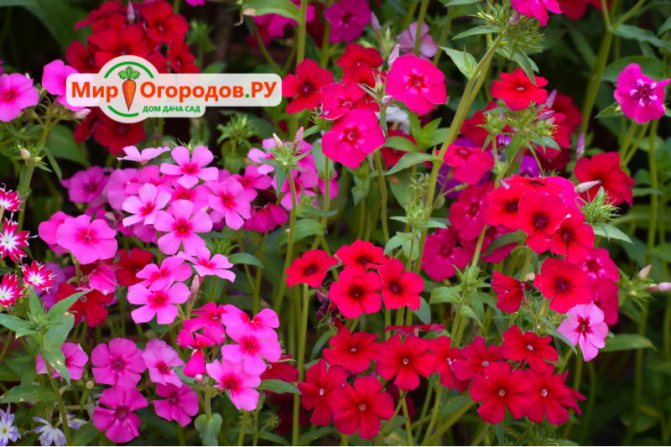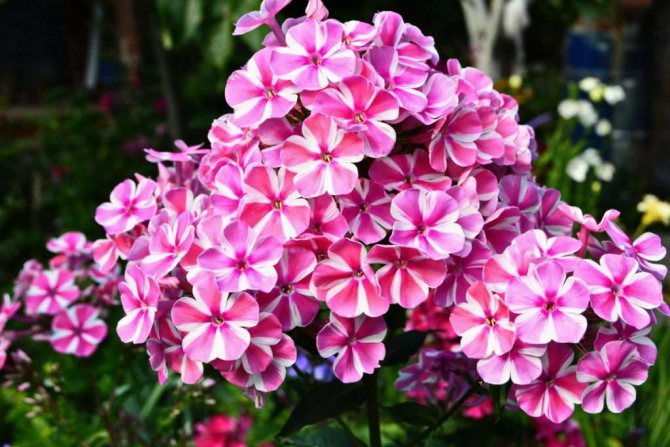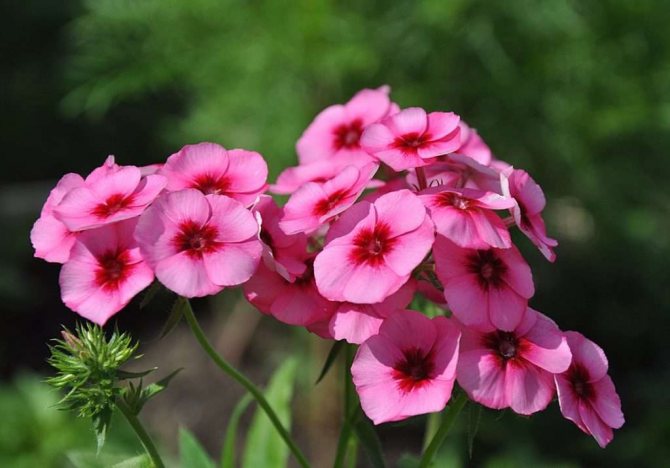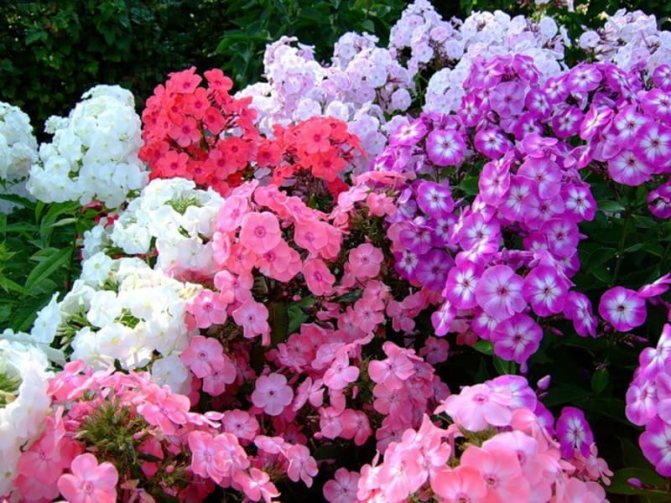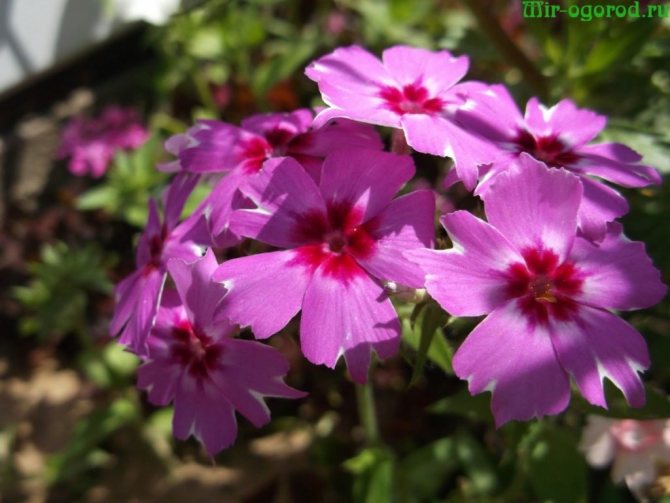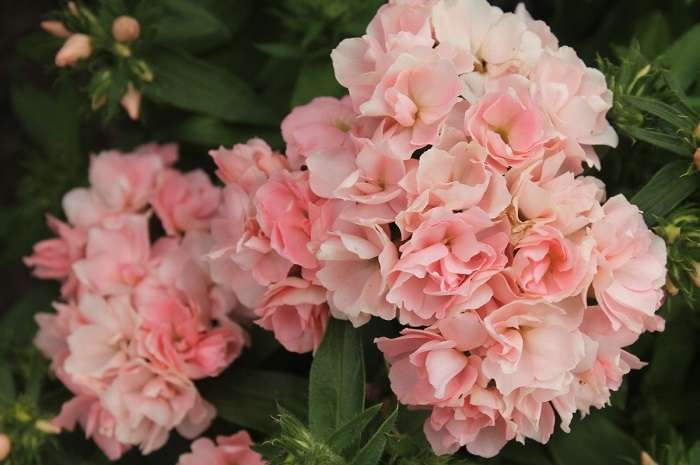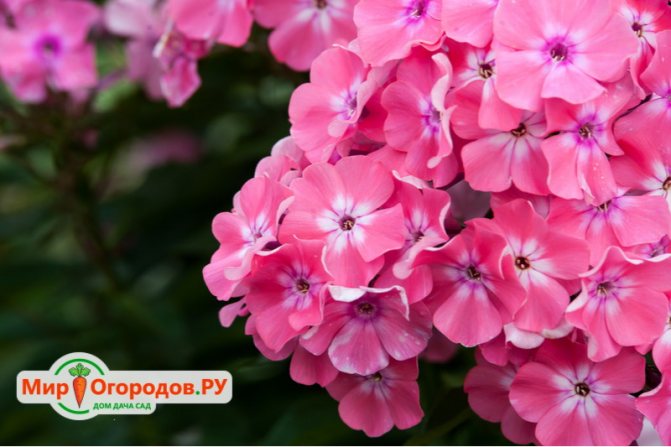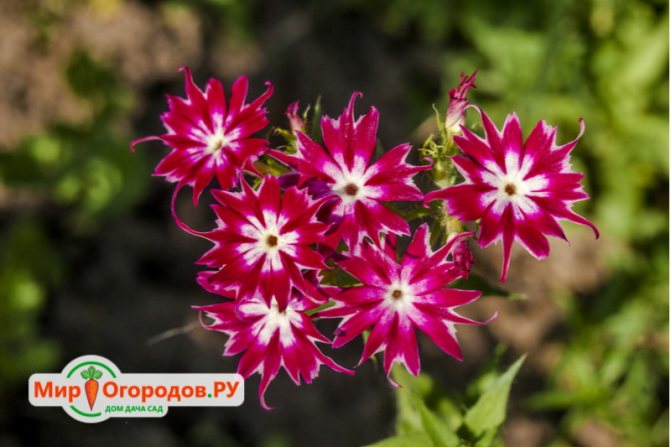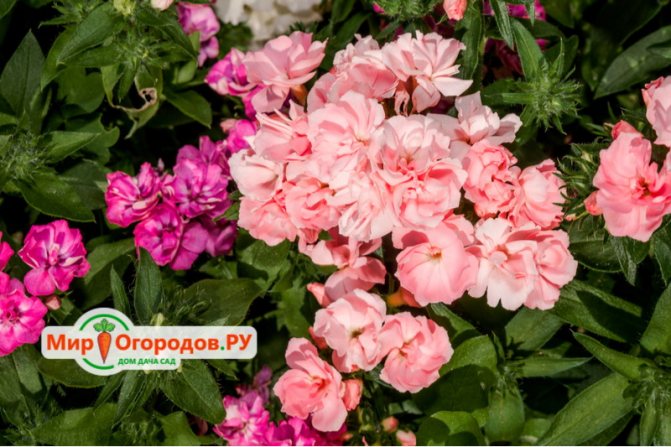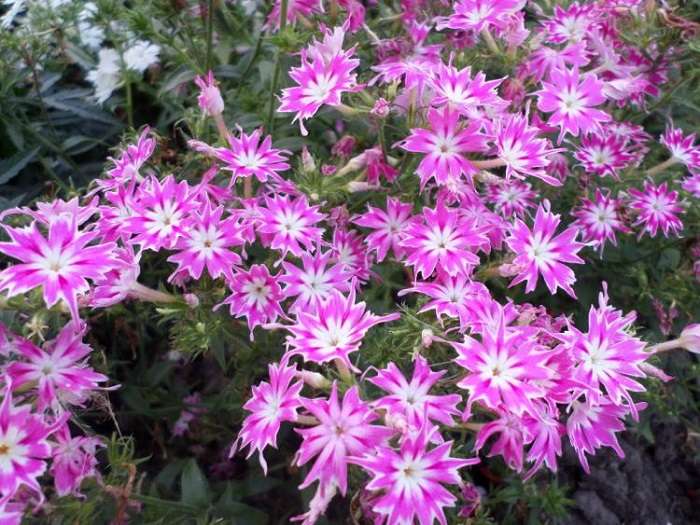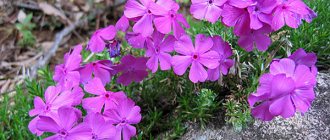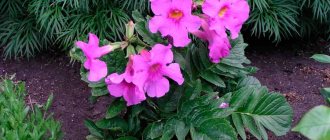The herbaceous plant phlox Drummond belongs to the Sinyukhov family, which grow naturally in the South of America. Bright flowers were brought to Europe at the end of the 19th century, where they immediately began to be used to decorate English gardens. Phloxes of this type can have different heights, so they can be planted not only in flower beds, but also used to decorate rock gardens, robots, curbs, flower beds. In order for flowering to be long and abundant, Drummond phloxes are grown from seeds in a seedling way. You can learn all the secrets of planting and caring for an annual in the garden from our article.
Phlox varieties: photo

Phlox varieties
As mentioned above, phloxes are both annual and perennial.
One-year phlox varieties include, perhaps, their only representative in our country - Drummond phlox. This type of phlox will be discussed later.
Depending on the shape of the leaf, phloxes are divided into the following types:
- paniculate
- subulate
- spread out
- bifurcated
Based on the height of the flower stem and whimsicality to the soil, phloxes are classified into the following subgroups:
- ground cover or creeping
- friable
- undersized
- bush
- high bush
The most popular varieties of paniculate phlox are the following varieties:
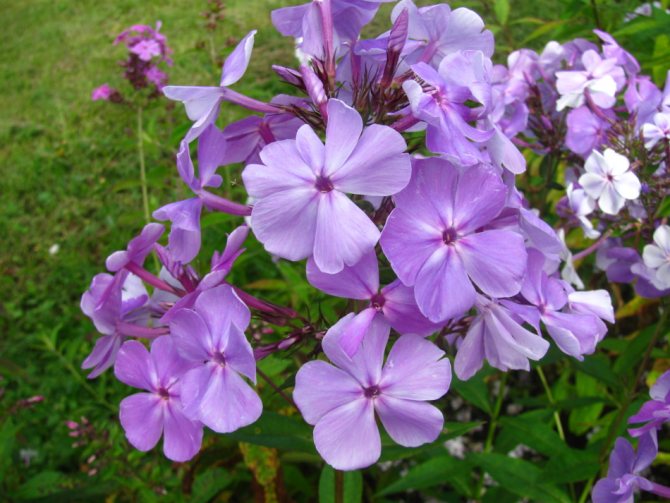

Phlox paniculata Sandro Botticelli
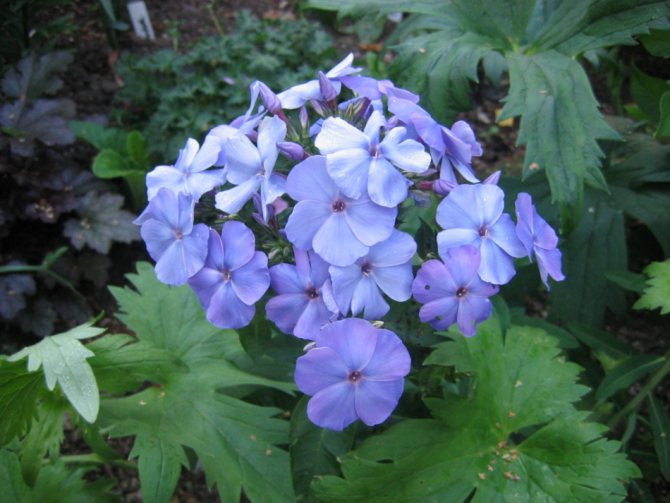

Phlox paniculata Blue joy
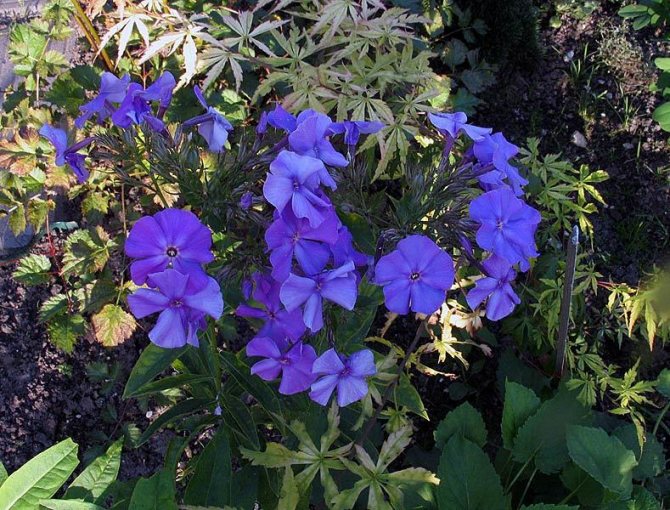

Phlox paniculata Night
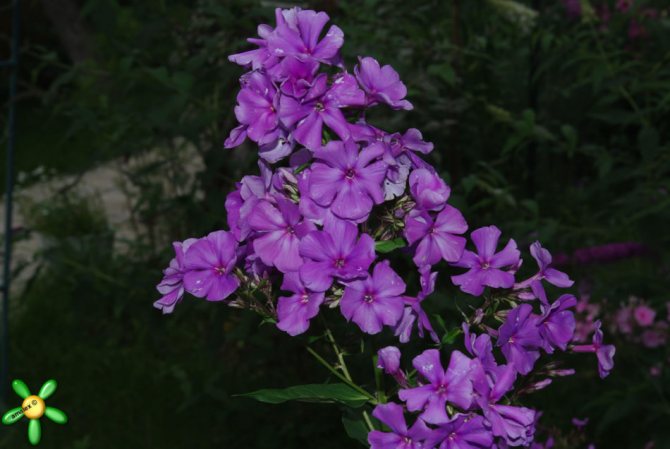

Phlox paniculata Frau Paulina Schollhammer
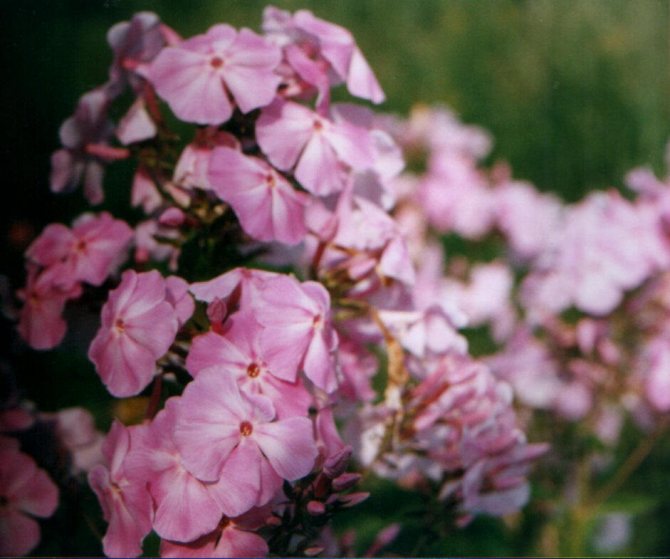

Phlox paniculata Olympics
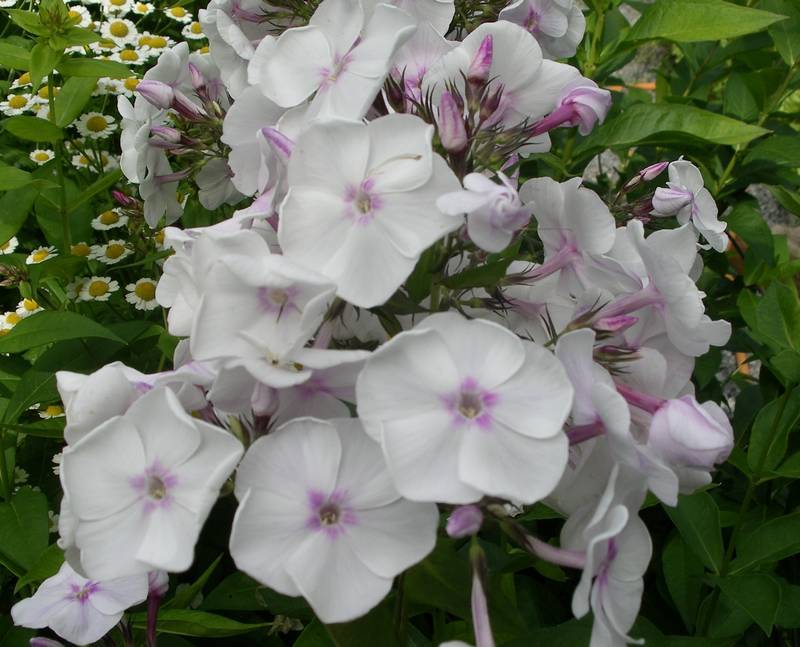

Phlox Panicled Master


Phlox paniculata Maria Fedorovna
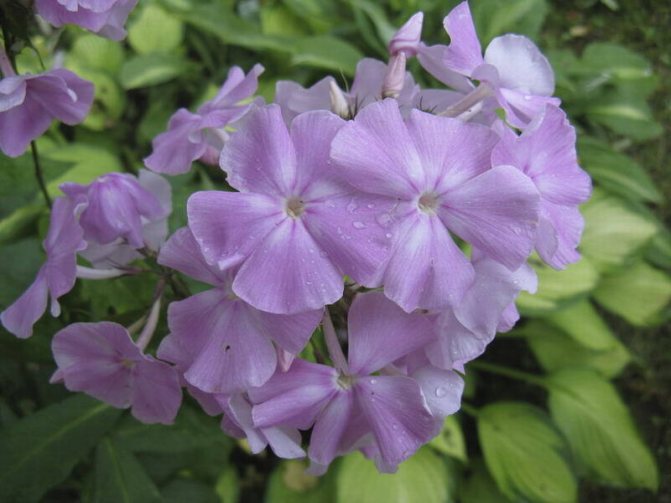

Phlox panicled Vladimir
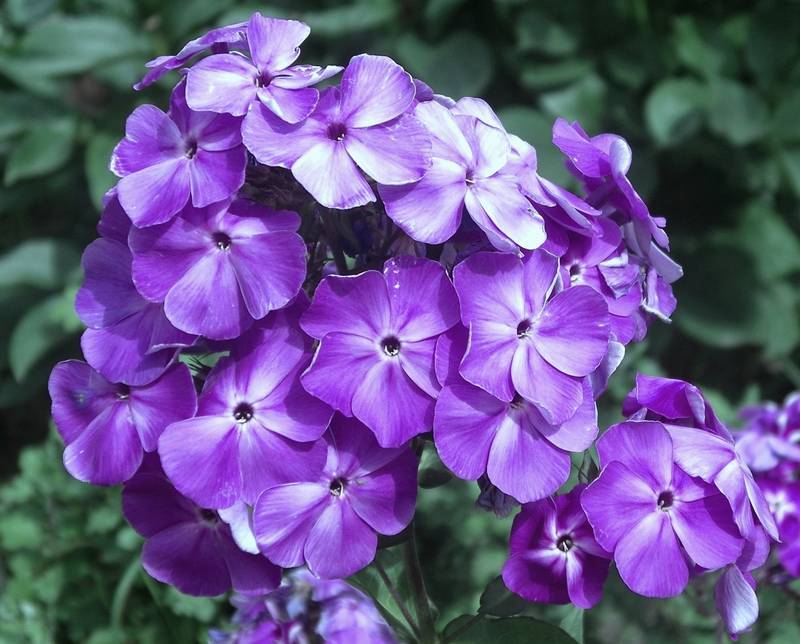

Phlox panicled Igor Talkov
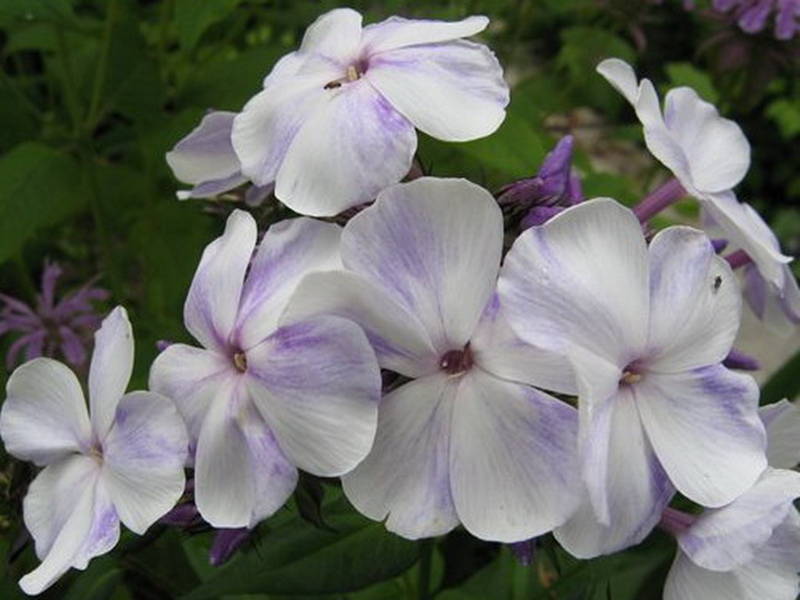

Phlox paniculata Cloud


Phlox panicled Mirage
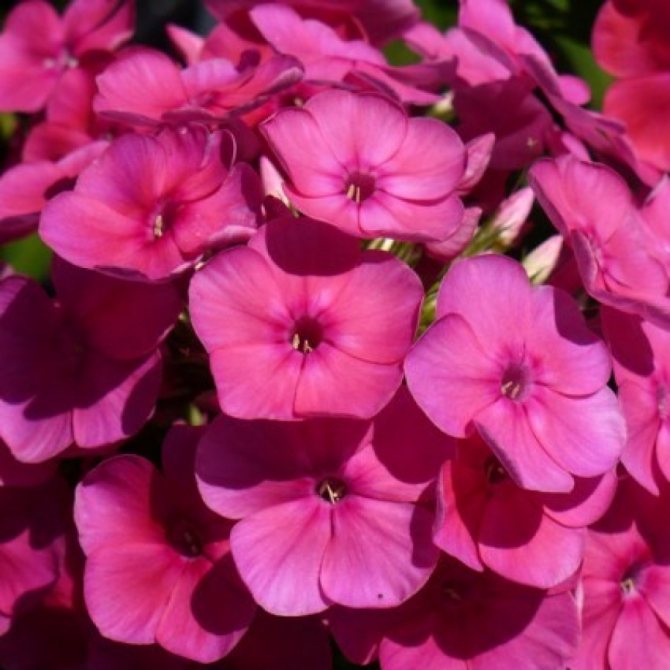

Phlox panicled Ostankino
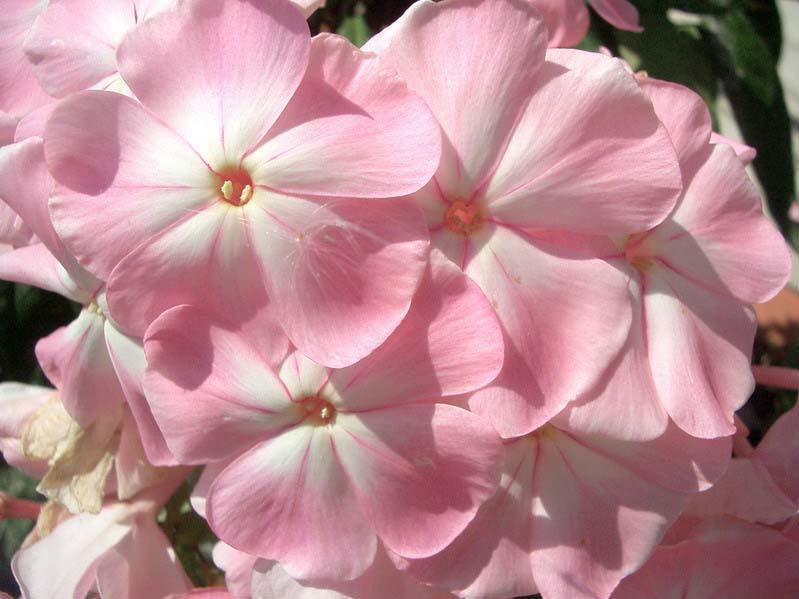

Phlox paniculata Apple color
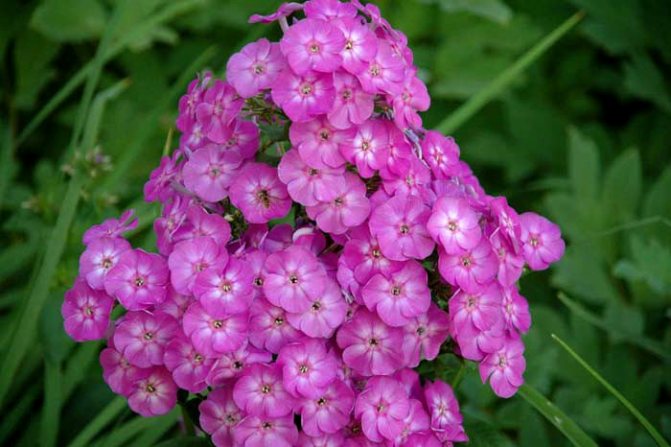

Phlox paniculata Stranger
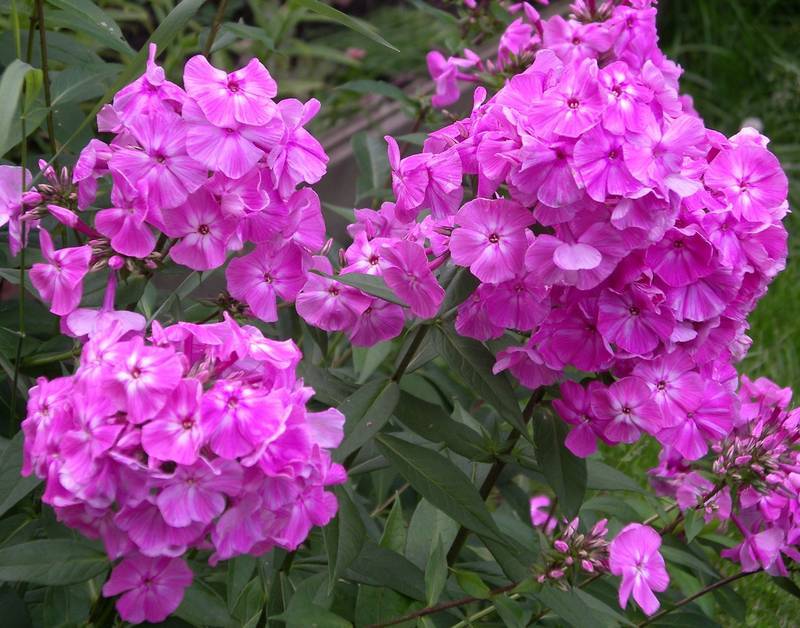

Phlox Panicled Viking
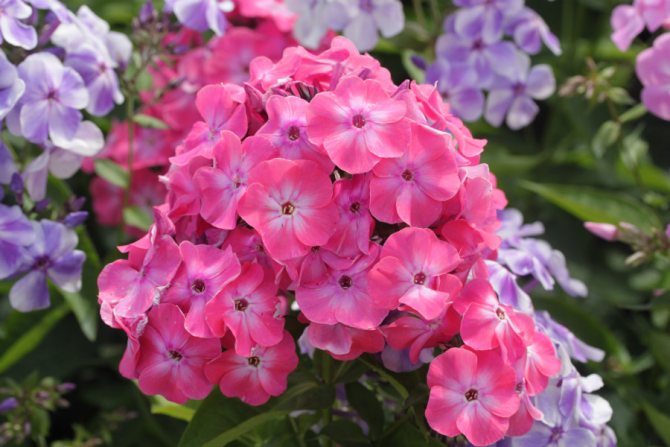

Phlox Panicled Waltz


Phlox paniculata New
Ground cover phlox include the following varieties:
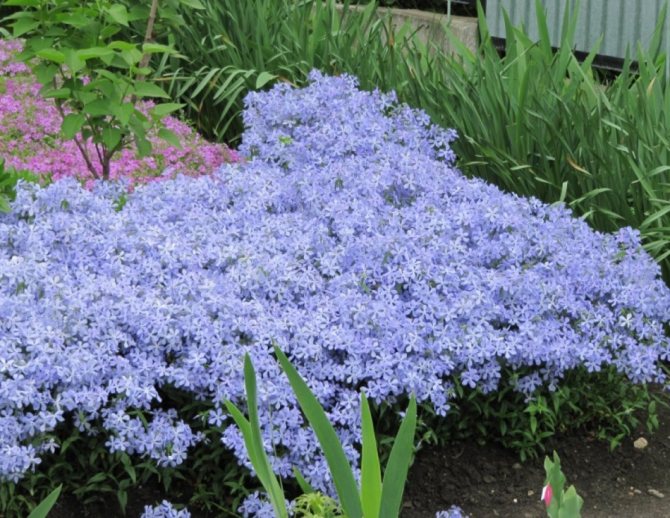

Phlox subulate
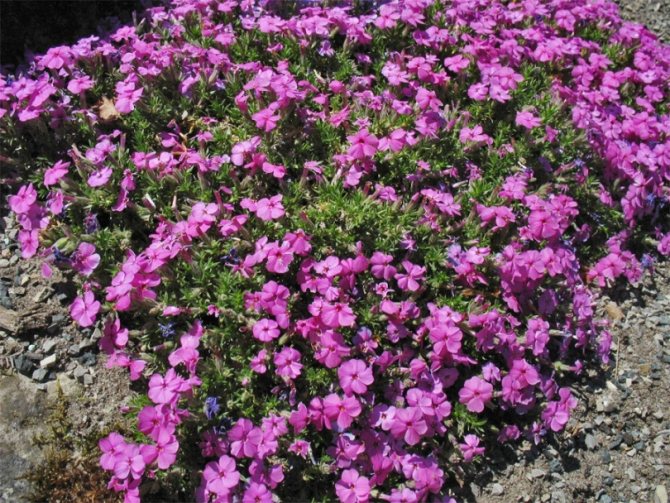

Phlox Douglas
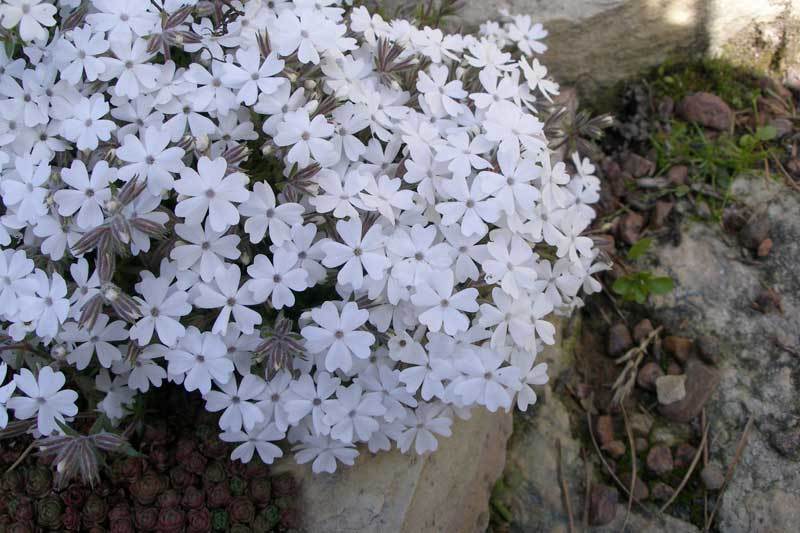

Phlox Snow
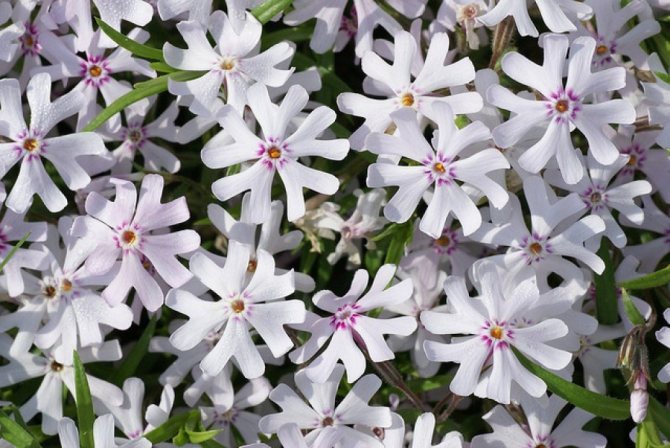

Bifurcated phlox
The following varieties of phlox can be attributed to friable phlox:
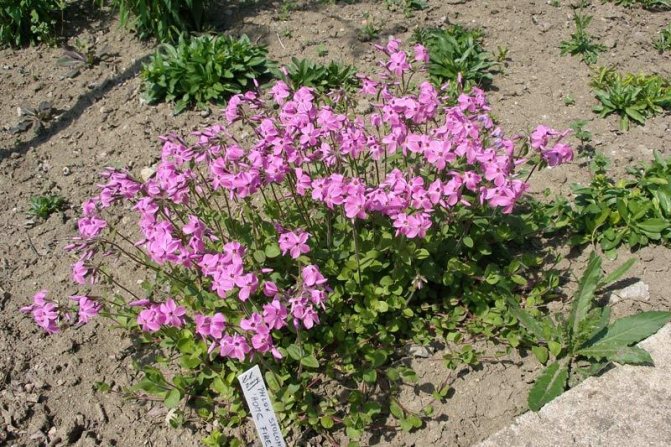

Phlox table-bearing
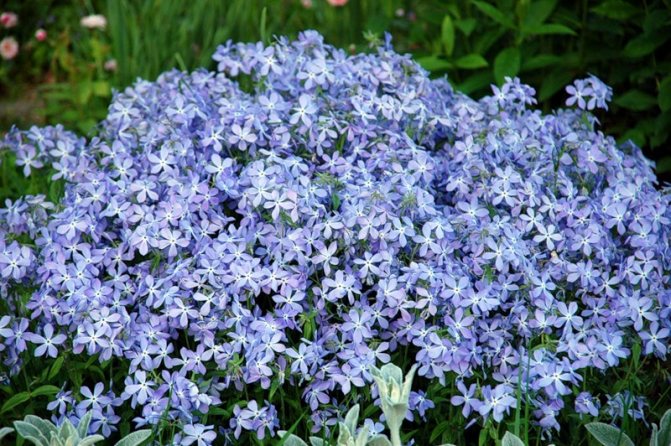

Splayed phlox
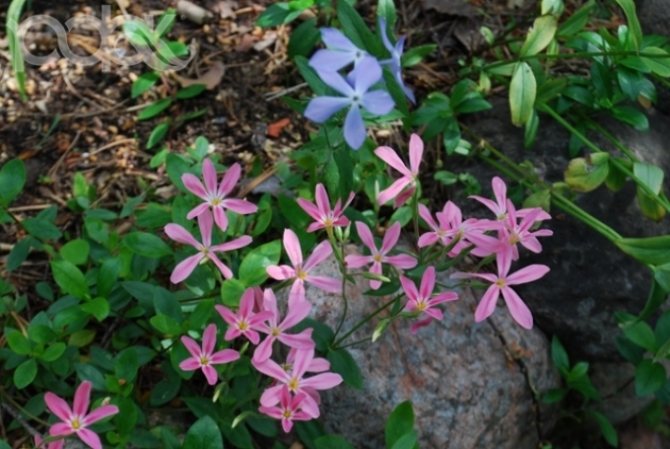

Phlox Adsurgens
The following varieties of phlox are considered bush plants:
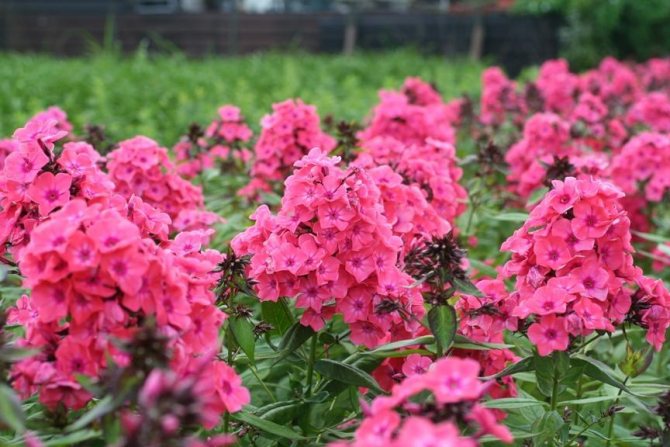

Phlox Windsor
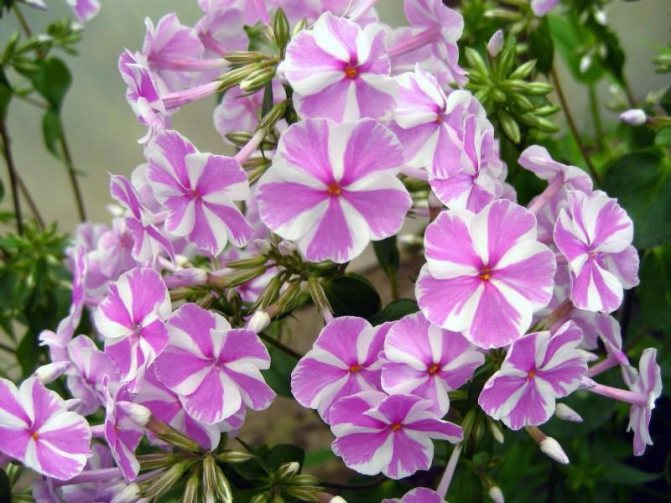

Phlox Natasha
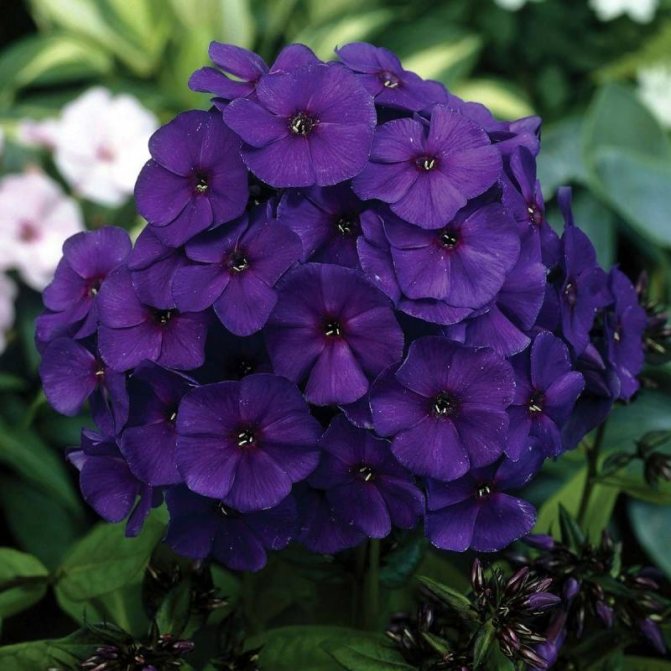

Phlox Nicky
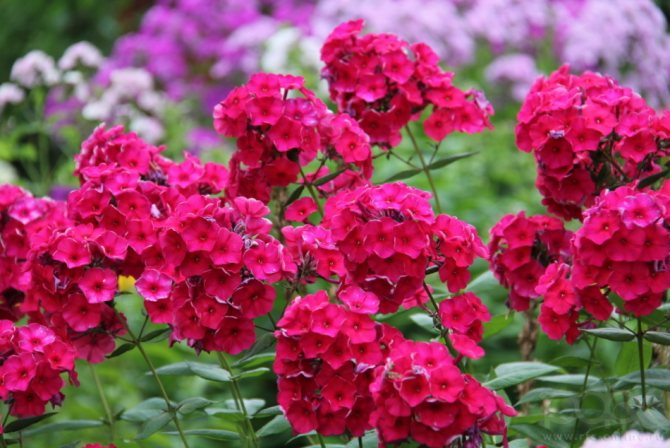

Phlox Tenor
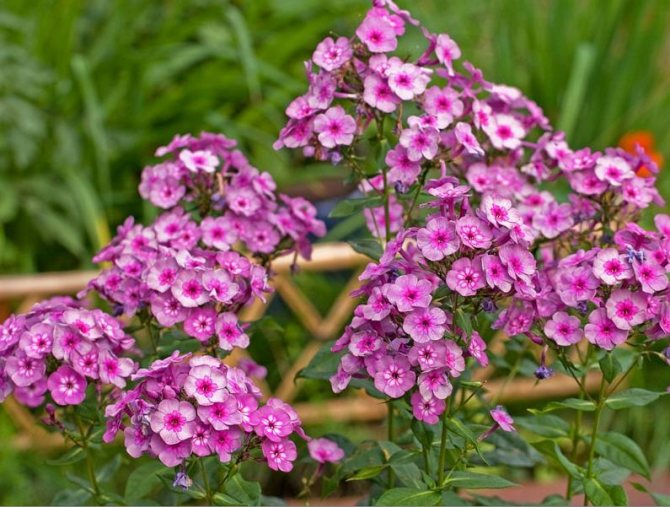

Phlox Magic Blue
The following varieties of phlox belong to undersized phlox:
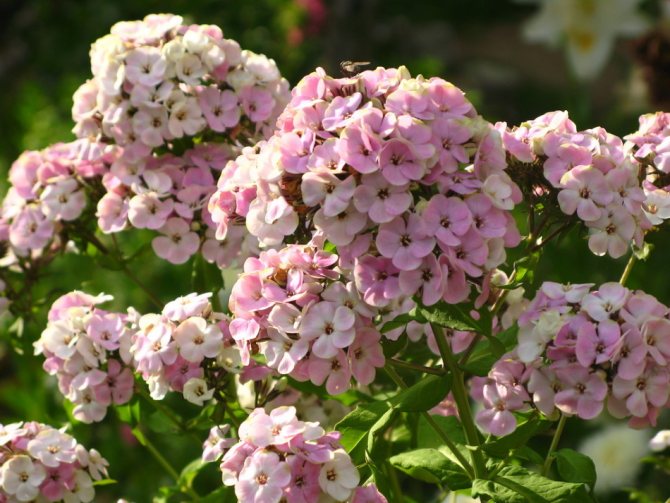

Phlox Sherbet Cocktail
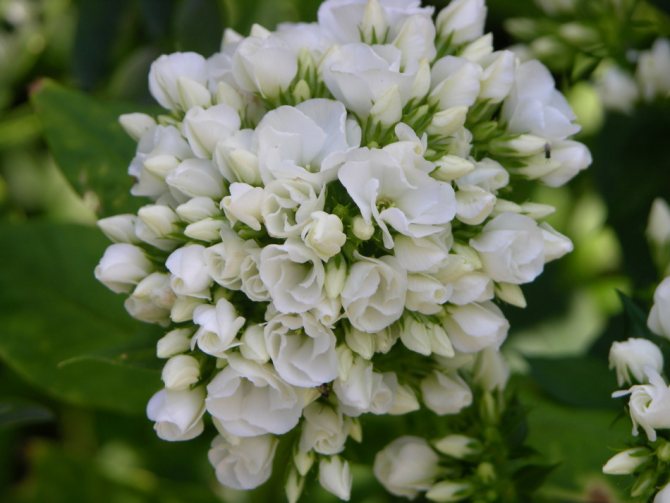

Phlox Tiara
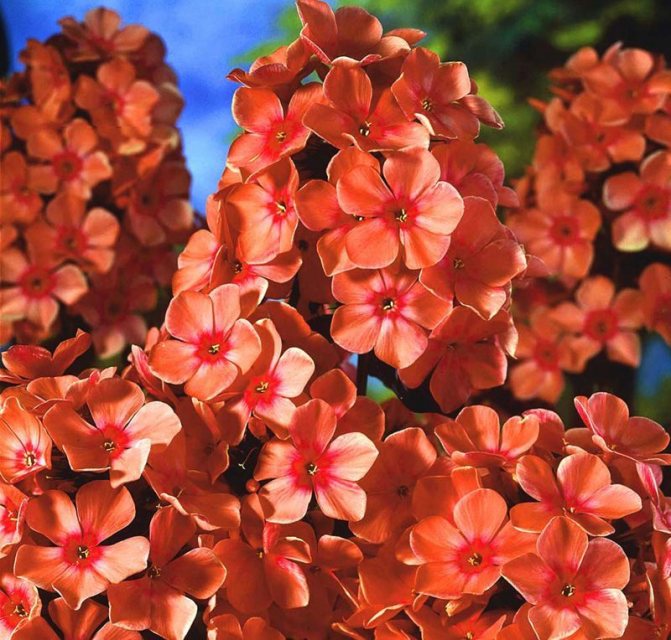

Phlox Orange Perfection
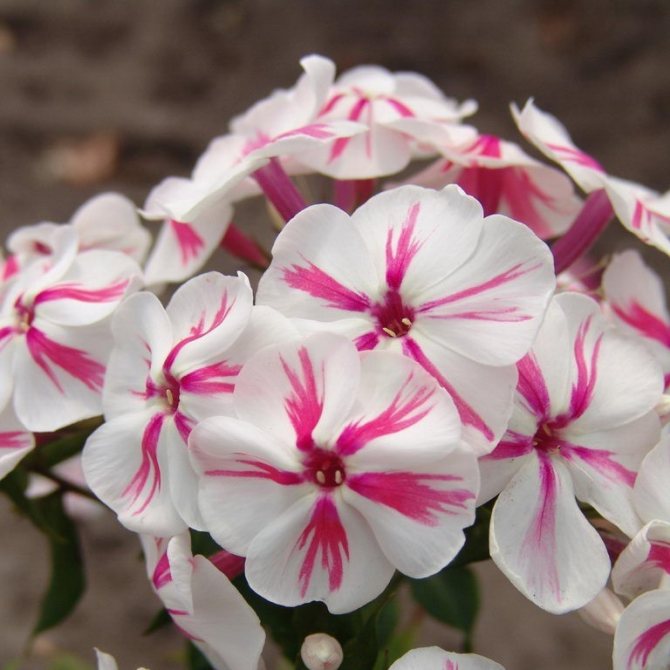

Phlox Twister


Phlox Success
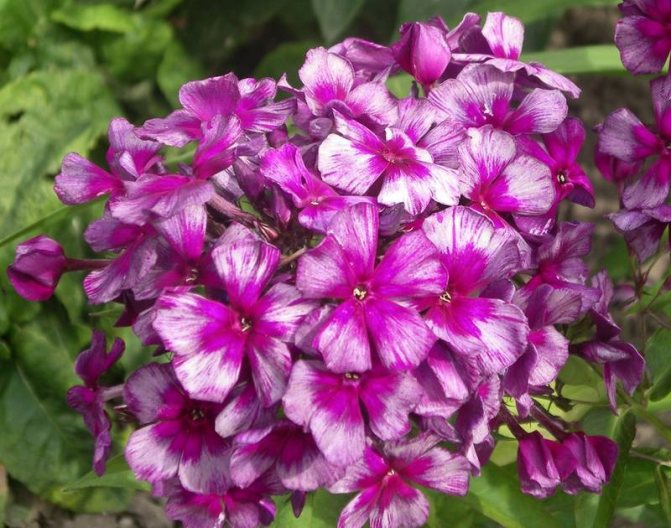

Phlox Dragon
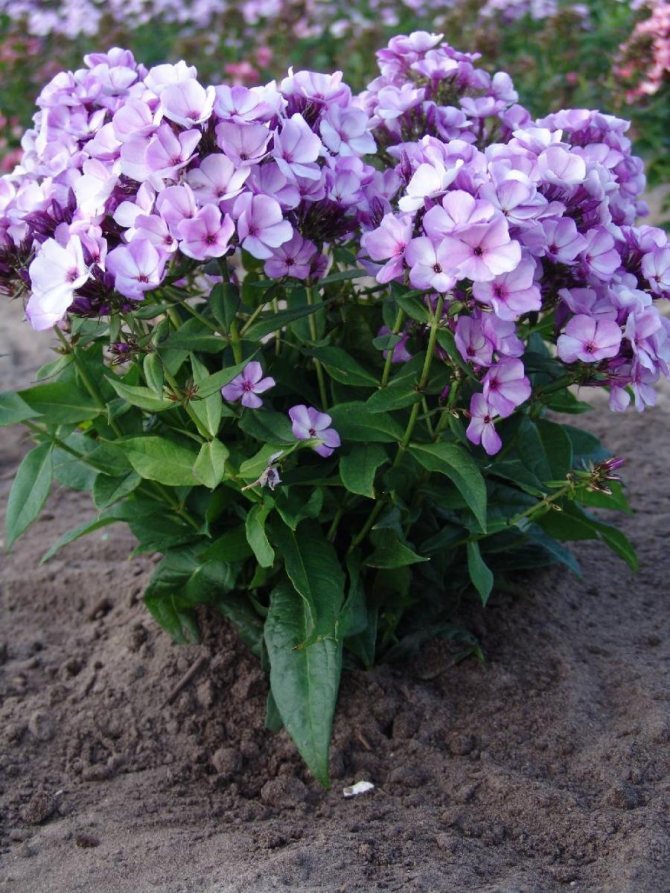

Phlox Jeffs Blue
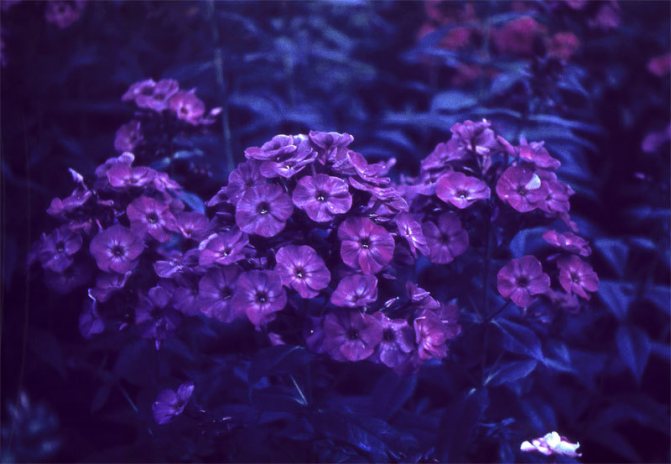

Phlox Chernomor
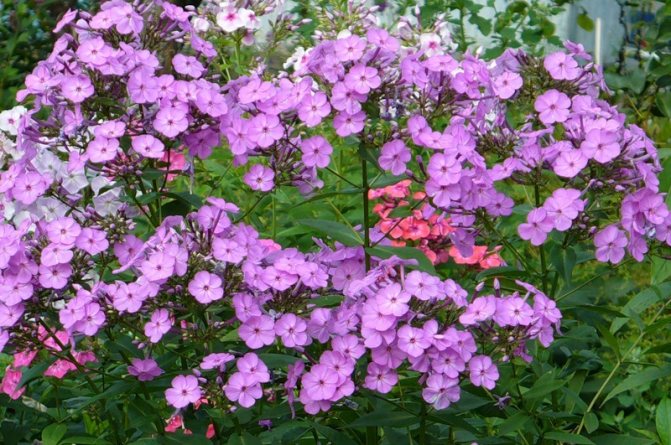

Phlox Cool Best
Application in landscape design
Thanks to the assortment of varieties and colors, perennial phloxes have found the widest application in landscape design. Phlox paniculata, as a bush form, is planted in front gardens or on a grassy lawn, it looks especially good in a garden decorated in one of the rustic styles. A common technique is planting bushes along paths and in a mixed flower bed, where it is important to select varieties in height.
Phlox subulate is prized as a plant for borders and flower beds. It is often chosen to decorate an alpine slide, planted in mixborders.During flowering, a bright carpet looks unusually picturesque; it is often used to decorate slopes or natural stone steps.
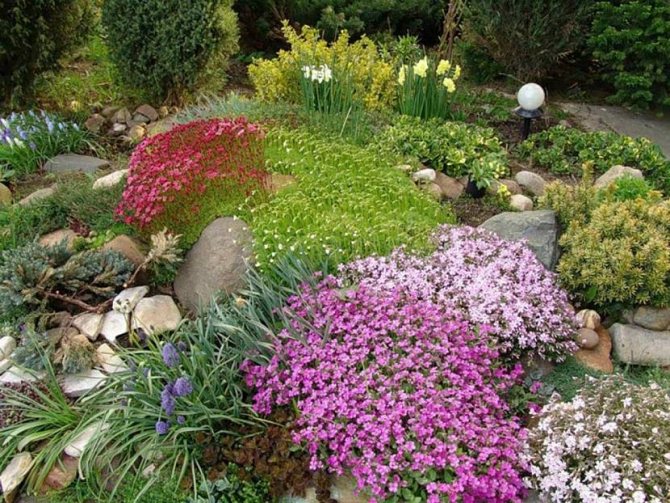

On an alpine slide Source s.
Split phlox is used in garden design in compositions located in shaded areas, in the lace shade of trees, near a pond or on shady slopes. Sometimes this form is chosen as a ground cover plant where there is not enough sun.
Phlox Drummond is distinguished by a shallow root system, therefore it is used not only in group plantings in mixborders, but also planted in garden containers, and sometimes in garden pots. The annual forms a beautiful, uniform border, which is why it often borders garden paths.
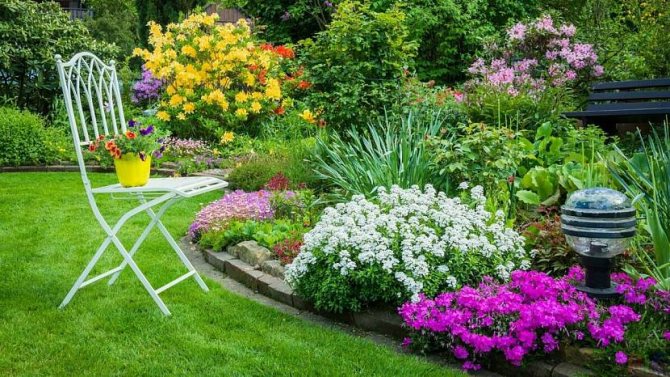

Phlox subulate perennial - species: photo
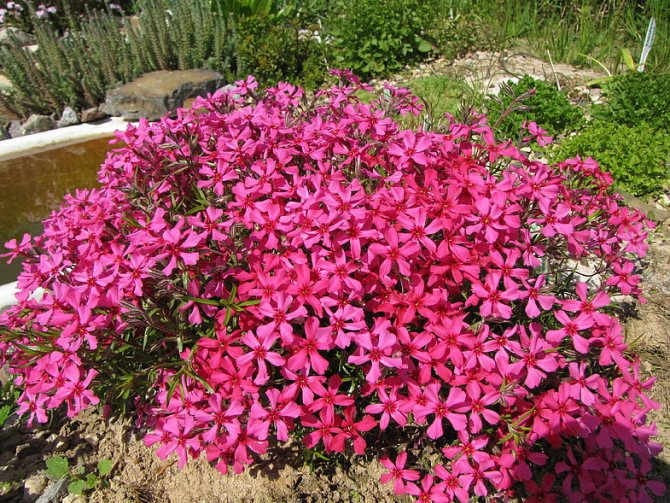

Phlox subulate - description
The subulate phlox is a perennial plant, and it can bloom even a couple of times a year (in May-June and August-September). True, the second flowering of this plant may not be too bright and lush.
Subulate phlox refers to ground cover, undersized phlox species. In height, as a rule, it can reach 15-20 cm.
The petals of the subulate phlox flowers have a pointed shape - it is this feature that has given rise to such a name for the subspecies. The length of one petal is on average 2 cm.
Depending on the variety, subulate phlox can be of various colors - white, blue, pink. In addition, the monochromatic background of a flower can be decorated with numerous dots, specks or stripes of contrasting colors.
The most popular in our latitudes are the following varieties of subulate phlox:
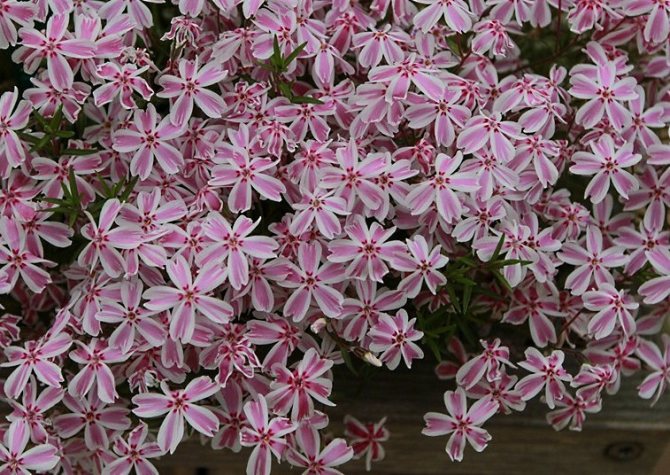

Phlox subulate Candy Stripes
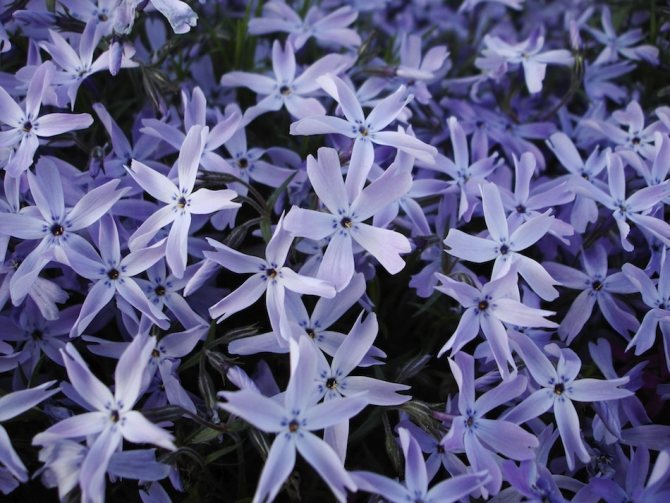

Phlox subulate Tellaria
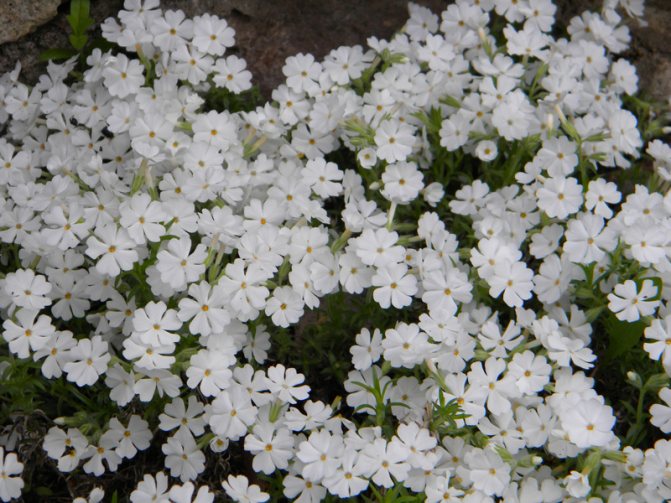

Phlox subulate Mayishne
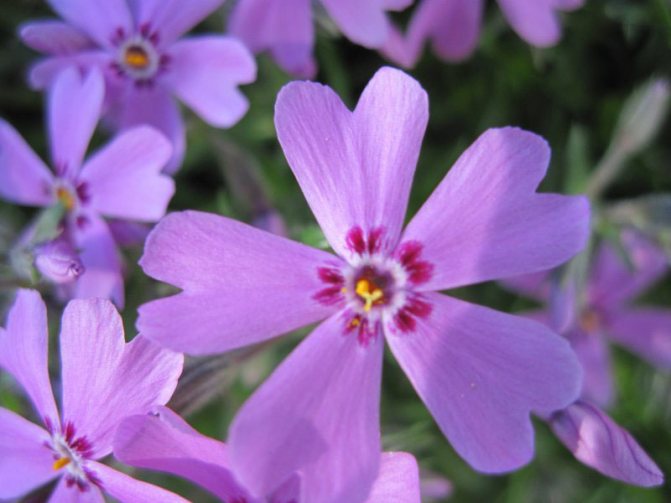

Phlox subulate Thumbelina
Phlox Drummond mix: popular varietal mixes
The following varieties of Drummond phlox are popular among flower growers, which often used in varietal mixtures Mix to decorate the site:
| Batch or variety name | Description |
| "Buttons" | A series of bushy phlox, the flowers of which have a peephole in the center. Coloring - varied: a combination of white with shades of blue, red, pink. They are highly resistant to drought and high temperatures, therefore they are recommended to be grown in regions with hot summers |
| Chanel | A low-growing plant (the height of the stems does not exceed 20 cm), decorated with small double flowers. The petals are painted in a delicate peach shade |
| "Star Rain" | These are tall phloxes (about 50 cm) with flowers in the shape of stars, for which the variety got its name. Resistant to low temperatures, but does not tolerate darkening, so it should be planted in a sunny place |
| "Grandiflora" | Tetraploid variety. Its main advantage is its large flowers up to 4 cm in diameter. The color can be varied. |
| "Fl Grammy" | A series of compact Drummond phloxes with a height of 15 to 20 cm. A feature of this series is a white "eye" in the middle of the star-shaped flowers. The background shade can be varied: from pink to burgundy |
These are far from all varieties and hybrids of Drummond phlox. Today on sale you can find a wide variety of options for the height, shape and color of flowers. And this collection is regularly updated thanks to selection.
How to plant, when can perennial phlox be transplanted?
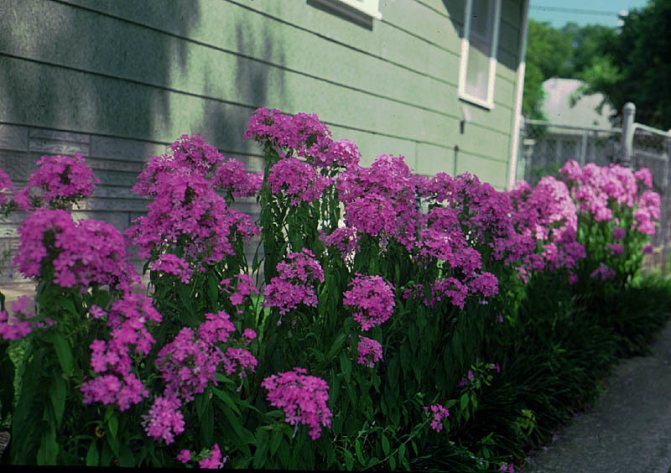

How to plant perennial phlox?
When planting phloxes in the ground, it is necessary to take into account the following criteria for choosing a site for planting:
- soil yield - phloxes love rich and fertile lands
- soil moisture - for most types of phlox, constant replenishment of moisture is extremely important
- the location of the site according to the sun - as a rule, all types of phlox prefer shaded or moderately lit places in the garden - planting in open sunny areas can lead to discoloration of phlox petals
Phloxes can be planted at any time of their vegetative development - in spring, summer, autumn.
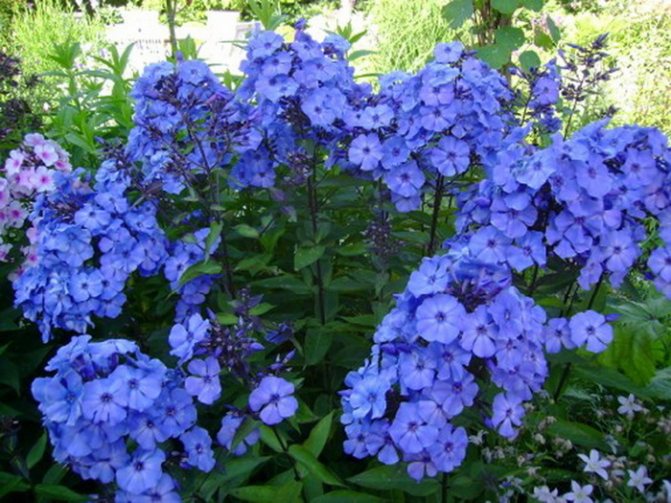

How to transplant phlox?
Phlox transplantation can also be carried out throughout the entire planting period. However, there are a number of the most favorable periods and practical advice for this manipulation:
- in spring phlox is best replanted in late April - early May
- the most optimal summer-autumn period for transplanting phlox falls at the beginning of August - by the middle of it, the flowers should already be transplanted
- in the fall, phlox is best transplanted by cutting off their tops in advance
- if you transplant phlox during its flowering period with a whole color, then you need to very carefully dig it out
How to grow phlox
It is necessary to choose the right place so that the flowering is lush and long. This plant tolerates drought well, an open, sunny place, without a hint of shade, is suitable for growing it.
The plant also tolerates the first frosts well, with them the ground part remains green, only the flowers suffer. Therefore, in the fall, phlox blooms for a long time, until the moment when stable low temperatures come at night.
The soil should be well-regulated, moderately filled with humus, peat, humus. If it is too light or too heavy, it can harm the plant. Too much moisture accumulates in heavy soil, phloxes will rot. If the soil is too light, the root system along with the soil will overheat too much.
Planting phloxes in perennial soil in spring, autumn with roots, cuttings
Reproduction of perennial phlox is most often done in two main ways - by cuttings and dividing the bush with roots.
Dividing the phlox bush
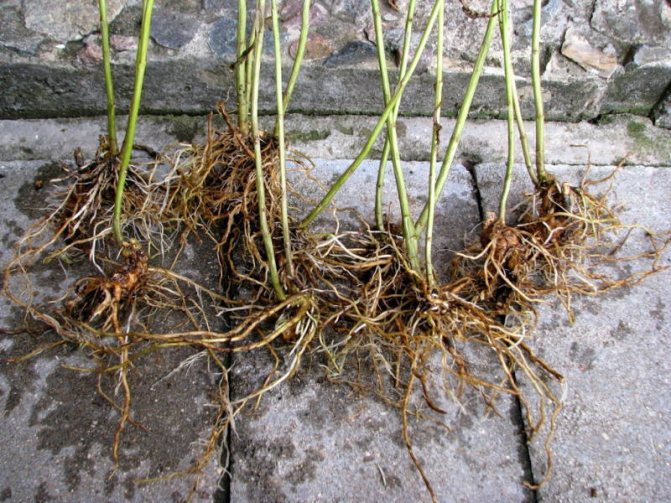

Dividing the phlox bush
Reproduction of phlox by dividing the bush can be carried out at any time of the year - in early autumn (before the first frost), in summer in cloudy weather and in spring.
Algorithm of actions:
- Carefully dig up the bush, trying not to damage the roots
- We shake the earthen lump from the phlox
- Unraveling the rhizomes of the plant
- We divide the bush into several new bushes (you can use a disinfected knife).
Division by cuttings
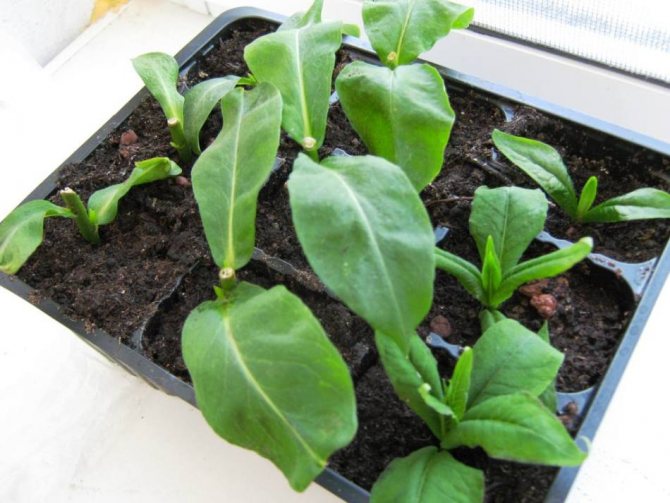

Planting phlox cuttings
- In late spring or early summer, we cut off shoots with two pairs of leaves on each of them from young phloxes (we cut the bottom directly under the lower leaves, and the top 1 cm above the upper ones)
- We remove the lower leaves, and cut the upper ones by half.
- We dig shallow pits for phlox at a distance of 6 cm from each other and 10 cm between the rows and fill them well with water
- Pour 1-2 cm sand into wet, but without water, pits
- We insert the cuttings of phlox into the prepared soil and compact it around the plant with our fingers
- Add some more earth
- Cover the cuttings of phlox and cover them with foil
- Water phlox a couple of times a week
- When the first leaves appear on the stems, remove the shading
- At the end of July - at the beginning of August, we transplant phlox sprouts to another place at a distance of 20 cm from each other
- Having kept phloxes in their last habitat for two years, in the third year we transplant them to a permanent place
If you carry out a similar procedure with phlox cuttings in summer or autumn, then at the rooting stage they need to be placed in a greenhouse, and before planting they should be kept in a growth stimulator for 10 hours.
Phlox "Drummond" - we analyze all planting options, conditions and care
Choosing a place for a flower bed
We have already mentioned more than once that many varieties of phlox are very fond of sunlight, otherwise they become smaller and, in general, may not bloom. Therefore, choose the brightest place. The flowers are quite resistant to drought, but they cannot stand stagnant moisture - the roots rot, the bushes wither. On fertile land, the flowers will be larger and will delight you with their beauty for much longer. From this it follows that the water should be poured in moderation, and not skimp on feed. You can grow both by seedling method and without it.
Advice! Plant Drummond phloxes with other light-loving flowers - asters, stone roses, heucheras, thyme, bells, ground cover plants.
Choosing when to plant
Phlox "Drummond" can be planted in different ways. The first option is the most common and simplest - in the spring, when the frost has passed. The seeds are simply sown in a previously prepared, fertile soil and then looked after. Phlox can also be grown in spring, but with the help of seedlings, which are planted at home in March. Or you can sow seeds in the fall, but it is important to do this late, so that the warmth does not return for sure. Otherwise, the sprouts will sprout, and frosts will destroy them - these are adult flowers that are not afraid of them, and fragile seedlings die immediately.
Advice! Usually, sowing is carried out in the fall, when the leaves from all the fruit trees in the garden have completely flown. So, experienced summer residents advise.
Seedling method of growing phlox
Sowing begins in March - for warm regions and temperate climates - this is the second decade, for cold ones - towards the end. The soil is suitable for a store, universal, it can be mixed with soil from a flower bed in equal proportions. Further, the soil mixture is poured with boiling water with manganese crystals for disinfection. When the soil is dry, sowing can be done.
Advice! Do not sow flowers and vegetables on the full moon and new moon, it is better to choose the days that the gardener's sowing calendar advises.
So, distribute the soil into containers, make shallow depressions and plant seeds, but just sprinkle them lightly on top. Then spill the crops with settled water, cover with a film. The temperature for optimal growth and development of future seedlings should be within 18-21 degrees. The sprouts will appear in about 7-10 days.
Now you remove the film, put the trays on a sunny windowsill, moisturizing the seedlings as the soil dries out. When 2-3 real leaves appear, the seedlings are dived into separate cups, it is best to take them from cardboard or peat. They are sold in stores, and can be planted in a permanent place along with this container. This does not harm the roots, Drummond phloxes will quickly take root.
When the sixth true leaf grows in the seedlings, the main stem must be pinned. In the future, this will give you beautiful bushes that will begin to bloom earlier - around the end of May. For the entire growing season, the house needs to be fed three times with an interval of 10-14 days. This should be nitrogen fertilization after the dive, potassium and phosphorus two subsequent times.
Advice! If your seedlings are growing very actively, and the weather has not yet settled down for planting on the street, then you can slow down growth by lowering the temperature to 15 degrees.
From the second decade of April, the seedlings begin to harden, taking them out to the balcony or outside. Transfer to open ground will be around the second decade of May. Many seedlings can already form buds by this time. Drummond phloxes are planted at a distance of 15-20 cm so that they do not interfere with each other in the future. Half a mixture of humus and compost is poured into the holes - 1/1 and half a glass of ash. The plantings are watered, mulched, and we will consider further care separately.
Seedless growing method
Drummond phlox seeds must be purchased from you, the date according to the lunar calendar is selected. About a week before sowing day, you need to prepare the site. They dig it up, remove all plant residues and spill it again with boiling water and manganese. As a fertilizer, you can use this option - 150 grams of wood ash per square meter, a spoonful of ammonium nitrate, 50-60 grams of superphosphate. The soil is loosened with a rake, distributing fertilizers.
After that, beards are made, the seeds are distributed in them 2-3 pieces in one place, after which 15-20 cm recede and 2-3 seeds are again put. Further, the bed is filled up, watered carefully so as not to wash off the crops. A layer of straw mulch is laid on top.Sprouts, if all three sprout in one place, dive - those that are smaller and frail are removed.
Advice! If you are planting high and low varieties of Drummond phlox, then it is better to plant the first one a week earlier, so that flowering begins at the same time.
In principle, before winter, planting is carried out as well - you clean the site, spill it for disinfection, let it dry. Next, you distribute fertilizers, you can use a solution in a bucket of water of 20 grams of superphosphate per square meter and potassium sulfate in the same amount. You can mix equal amounts of soil with humus. After that, sowing is carried out according to the method indicated above, after the plot is mulched in winter with peat, straw or spruce branches.
For a note! If in the fall warming nevertheless began after frosts, then so that the soil does not thaw in the sun, it is better to cover it. This will prevent the seeds from sprouting.
How to transplant phloxes in the summer?
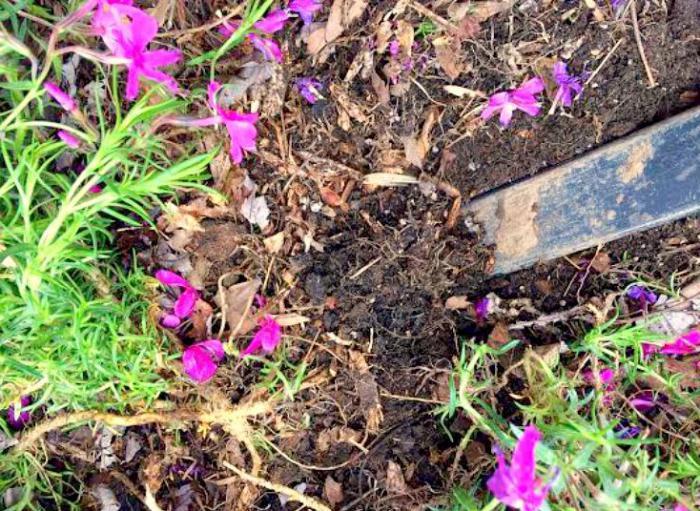

How to transplant phloxes in the summer?
- If you transplant phloxes in the summer, then they need to be sure to provide regular and abundant watering.
- Also, during the transplanting process, it is necessary to leave a good earthen lump on the rhizome of the plant.
- When transplanting phlox in the summer, it is recommended to cut off their top in order to direct all the power of the plant to rooting it, and not to flowering
Phlox breeding methods
Phlox Drummond can be planted with seedlings, which are grown in advance on a windowsill, and then transplanted into open ground.
You can grow phlox seeds by planting them directly in open ground. Such a planting makes life easier for gardeners, there is no need to bother with seedlings and further transplantation. But if you want phlox to please with flowers in July, it is better to opt for seedlings.
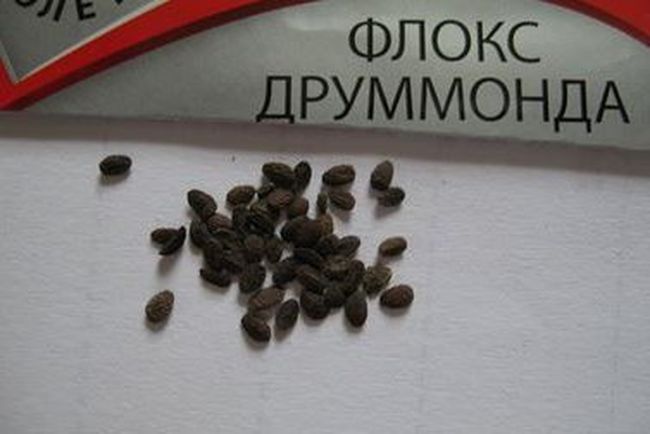

Phloxes - top dressing in spring: what fertilizers do phloxes like?
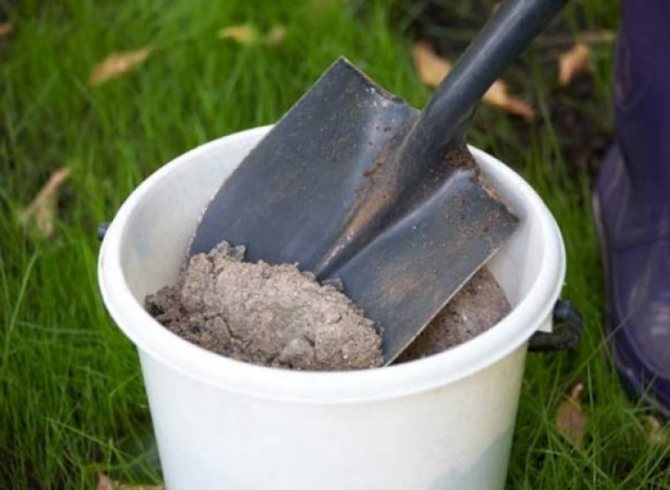

Fertilizers for phlox
Although it is believed that phlox are quite unpretentious plants, however, in order for them to grow actively and colorful, it is advisable to fertilize them regularly.
Phlox should be fed at least three times a year.
The following types of dressings are best suited for fertilizing phlox:
- Manure (in autumn - horse manure, and in spring - cow manure)
- Humus
- Compost
- Ash
- Nitrogen fertilizers (urea)
- Phosphate fertilizers
- Potash fertilizers
Nitrogen, phosphorus and potash fertilizers should be used very carefully for phloxes - it is imperative to follow the instructions for fertilization.
For spring feeding, compost with urea is best suited (one tablespoon of urea must be added to half a bucket of humus). It is advisable to carefully spread the resulting subcortex under the plant.
Summer phlox care
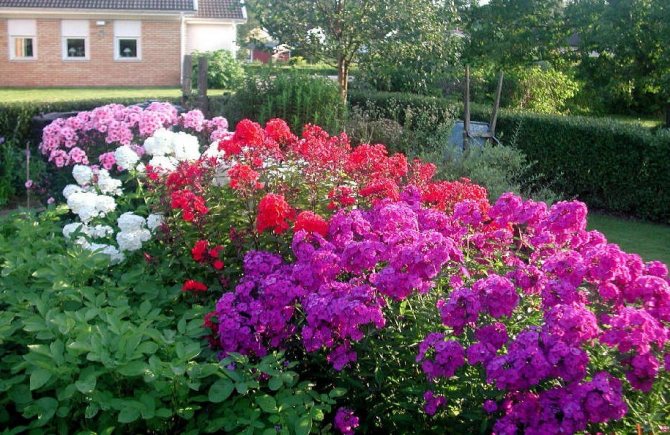

Summer phlox care
Phlox care in the summer consists of a whole range of activities:
- Regular watering - the soil under phlox should never be too dry
- Mulching the soil allows moisture to stay in the soil longer
- Top dressing in the summer can be performed according to several schemes:
- Early June - manure with superphosphate, early July - diluted clean manure, end of July - potassium-phosphorus fertilizers
- At the beginning of summer - humus with urea, budding period - a couple of tablespoons of mineral fertilizers for flowering plants, after flowering - phosphorus-potassium dressing
- Disease and pest control
- Getting rid of dead buds will help keep flowering longer and increase the number of flowers for the next season.
- Timely transplantation of phlox allows the plant to develop and reproduce
How to pinch annual phlox. Do I need to pinch annual phlox?
Phlox are perennial plants, but there is one representative, according to the type of subspecies of this family, which is called Drummond phlox. This phlox plant just fades in one season, therefore it is considered an annual.
There is a special care complex for one-year phlox, which is slightly different from the usual one, because you need to have time to accommodate all self-care procedures in one season.
Growing annual phlox is a simple matter that repeats itself like a certain cycle: planting, growing, flowering. You can plant annual phlox in two ways: directly with seeds in the soil mixture, or germinate these seeds for a start, and then plant seedlings, which will turn out into open ground. All the characteristics of growing phlox indicate that this plant loves well-lit areas, fertile soils, which means that everything that is aimed at developing and improving the well-being of phlox is good.
Considering this point, it is worth paying attention to whether it is worth pinching phlox when they grow and form leaves. Is it that good for the plant, is it right for him? Usually, to activate the rapid growth of plants, they are either transplanted or pruned. Annual phloxes absolutely cannot survive the transplant, they are much better off if they manage with them with some easy means. Pinching is an easy and less traumatic way for the plant to make the flowering lush and extensive. Phlox is not pinched immediately, but as the plant grows. As soon as the first small leaves are formed on it, and there should be at least five or six of them, take the ones that are closest, and then pinch them together with your fingers gently so as not to tear off. Do a similar procedure with several leaves on the crown, but not in such a way as to grab everything and use it, but so that about half is involved, and half remains at the will of the phlox itself for development.


There is also a practice in the open field of pinching several leaves from different plants, but this is possible if the plants are planted very densely. There is an interchange of useful properties, and there is also supposedly a possibility that the plant from this will only be more magnificent. But still, most people practice precisely the technique of pinching annual phloxes on one plant, without jumping over and without moving to neighboring ones.
After pinching, let the care be the same as in normal conditions for phlox: standard watering, fertilizing the soil so that it remains nutritious and always saturates the phlox, throughout the entire flowering period of phlox, until they bloom. To help nutrients pass through the potting mix much better, loosen it regularly around the plant without touching the potting mix next to the plant itself, as you risk slightly damaging it. The temperature in spring and summer will be quite appropriate, so there is no need to take any additional measures for the care of annual phlox, in contrast to perennial phlox.
Phlox faded - what to do next, how to cut phlox after flowering?
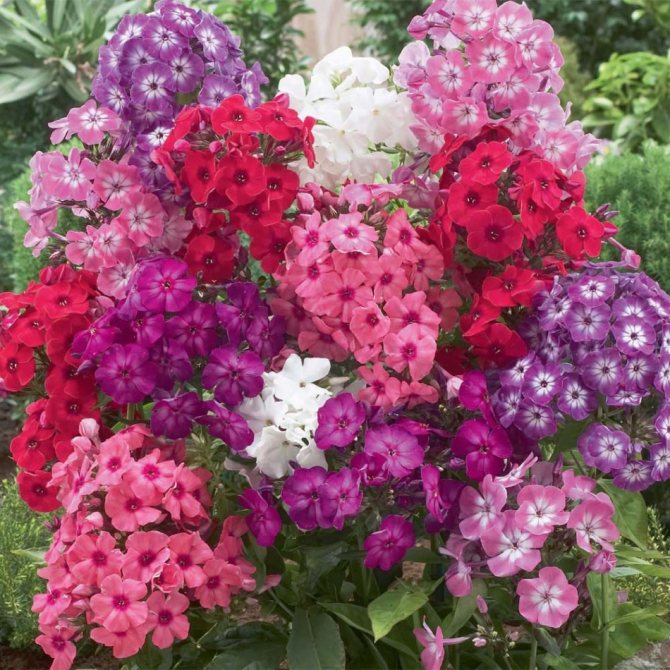

What to do with faded phlox?
A very important step in the process of growing phlox is preparing them for winter.
After the phloxes have faded, they need to be cut off so that the plant overwinters safely, and in the spring it was ready to please its owners with bright and thick flowers with renewed vigor.
There are two ways to trim phlox:
- To ground level - this method is suitable for cold snowy latitudes and helps prevent the spread of bacteria through the plant
- At 5-10 cm above soil level - this method is suitable for more southern latitudes with little snow and helps to retain snow just above the plant to replenish it with moisture
All trimmed phlox bushes must be removed from the site and burned.
The next step in preparing for winter is feeding the soil and plants. As an autumn feeding of phlox, a tablespoon of mineral fertilizer spread out under each bush is perfect. It is also recommended to fertilize phlox with ash.
After 7-10 days after feeding, phloxes must be covered with peat, humus, compost or just dry leaves.
Perennial phloxes - diseases, treatment
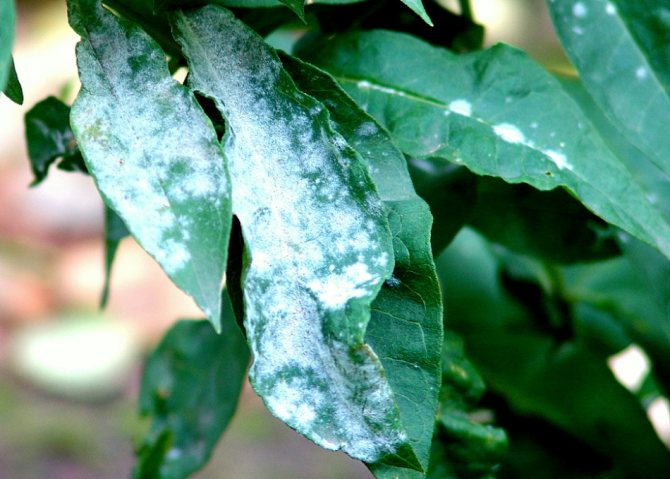

Diseases and treatment of phlox
Phlox, like any other plants, are susceptible to diseases and attacks of various kinds of pests.
The most common diseases of phlox are:
- powdery mildew
- nematode
- rust
- white verticellous wilting
- mosaic
- color fading
- leaf chopping
- spotting
- variegation
- alternaria
- phomosis
The insect pests for phlox are the clicker beetle, earwig, caterpillars and slobbering penny.
Phlox also have larger enemies - snails and slugs.
Dangerous diseases and pests of annual phlox
Photophilous phloxes are practically not susceptible to infectious diseases. Fungi affect the plant only if the rules of care are violated. The most dangerous are diseases:
- Variegation, which is manifested by the formation of ugly patterns on the leaf plates and petals. The infection disfigures the bush.


Powdery mildew, which is manifested by the formation of a white coating on the leaves.
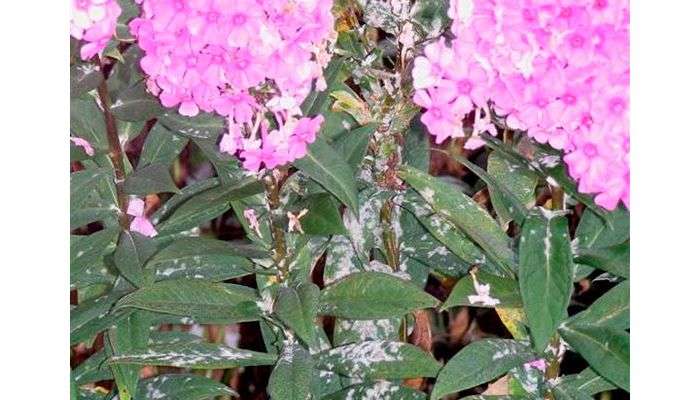

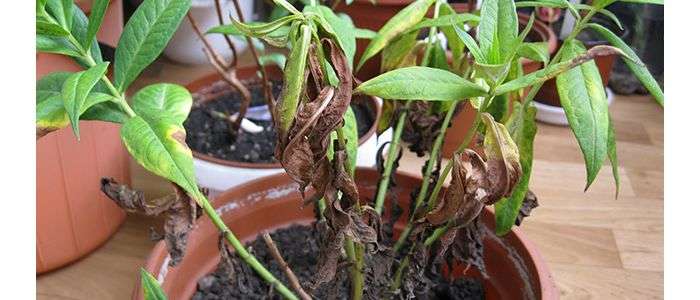

Fragrant bushes are a favorite delicacy of naked slugs, caterpillars. Also, the plant is very often affected by nematodes.
Why don't perennial phlox bloom?


Why don't perennial phlox bloom?
The absence of phlox blooming can be explained by the following factors:
- lack of sunlight
- unfertilized or poorly mulched soil
- lack of moisture or, conversely, stagnant water
If at least one of the above conditions is not met, then the plant does not have enough strength to bloom. It can grow in height, grow underground, but not give color.
White bloom on phlox leaves: powdery mildew - what to do?
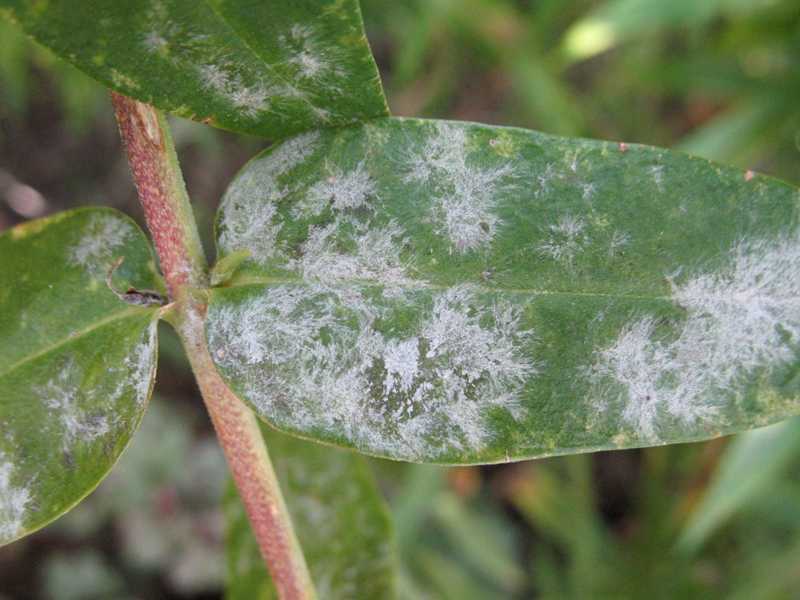

What to do with phlox powdery mildew?
Powdery mildew is a fungal disease that quite often affects phlox. This disease manifests itself in the form of a white spider web on the sheets. Over time, the cobweb begins to thicken and eventually spreads throughout the leaf. The leaf begins to turn yellow and wither. Over time, the entire bush may die.
Before talking about the fight against powdery mildew, it is necessary to understand the reason for its appearance. Most often, the plant succumbs to this disease due to improper care of it - improper planting, insufficient watering and feeding.
Fortunately, today there are quite a few ways to combat powdery mildew. For these purposes, the following means and preparations are used:
- soda solution
- soap solution
- detergent solution
- mullein (manure solution in water)
- colloidal sulfur
- Topaz
- Speed
All of these products are usually used to spray phlox flowers.
Annual phlox - care
Planting an annual phlox and caring for it in the open field is simple - do not interfere with the plant's development.
Professionals offer the following care rules:
- In extreme heat, the plant is watered regularly and abundantly in the evening.After planting the seedlings, the bushes are watered every 2 days. For 1 sq. m of soil should account for about 20 liters of water.
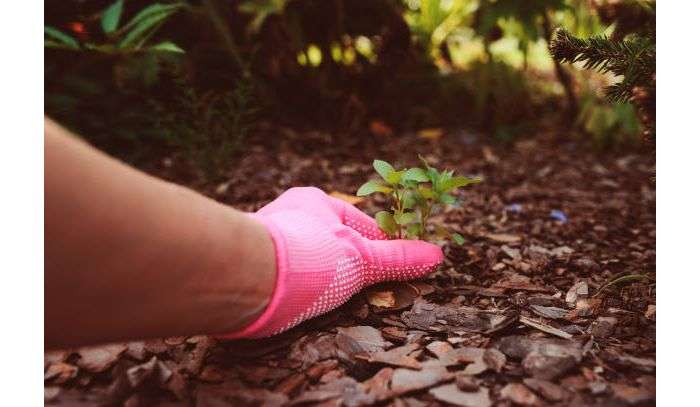

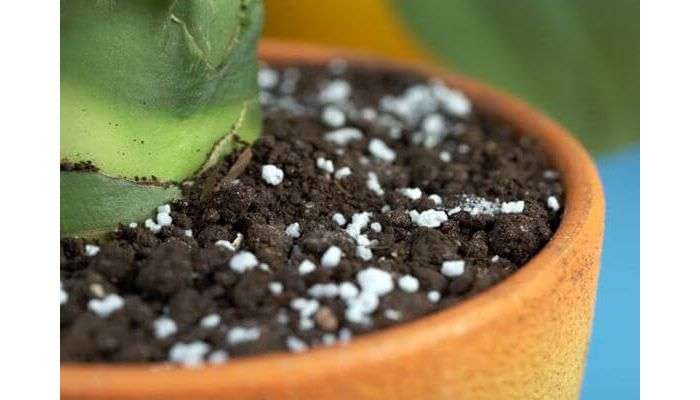

Advice! Additional application of ammonium nitrate will help form lush flower stalks.
It will not be superfluous for a florist to know how to collect phlox seeds. Moreover, the procedure is very simple. To complete it, you need to choose the most lush hats, which have already begun to turn yellow. After the last flower dries up, they are cut and placed in a cloth or paper bag. When the seeds are fully ripe, and the capsules are dry, they fall into the same bag. The gardener will only have to get the seed and sort it. Exceptionally large specimens are suitable for use. Until spring, the seeds are stored in a dark and dry place.
Why do phlox leaves curl, turn yellow and black: what to do?
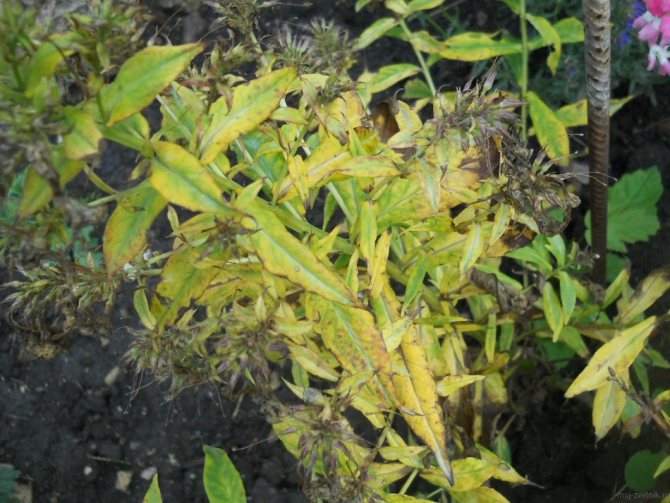

Why do phlox leaves turn yellow, turn black and curl?
- There can be many reasons for curling, yellowing and blackening of leaves in phloxes - both damage by pests and diseases, and improper care
- For example, with insufficient watering, the lower leaves of phlox begin to turn yellow, and then dry out altogether.
- Prolonged rains, and then a sharp drought can also cause the lower leaves of phlox to dry out.
- Excessive moisture is not the norm for phloxes - it can lead to the death of the plant
- Too densely planted phlox bushes are often covered with cracks along the entire length of the stem. The reasons for this phenomenon can also be an excess of moisture or nitrogen in the soil.
How to treat phlox for diseases?
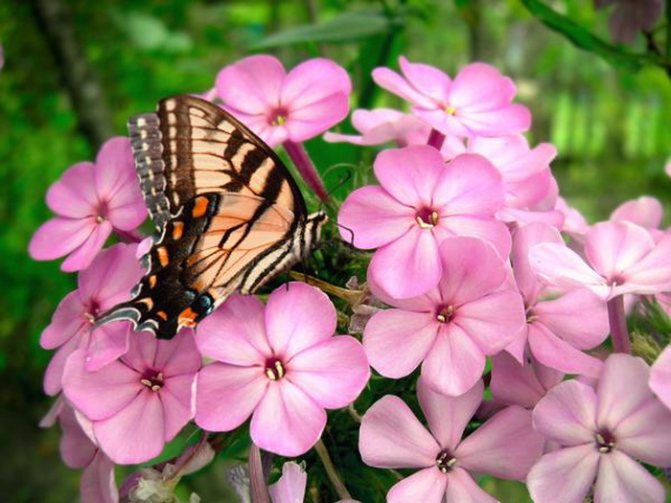

How are phlox treated for diseases?
It is believed that in order to cure phlox and prevent the spread of the disease to other plants, it is best to prune diseased leaves or remove diseased phlox from the garden altogether.
However, today many gardeners try to act more humanely to combat phlox diseases and try to use the following drugs:
- for jaundice of phlox, antibiotic solutions are used
- for powdery mildew - Topaz, copper oxychloride, furacilin solution, infusion of ash, soda ash with soap, copper-soap emulsion and other copper-containing preparations
- with septoria or leaf spot - home, Bordeaux liquid, oxychom
- for verticellosis wilting of stems - glyocladin or trichodermin
- for rust - Bordeaux liquid, iron vitriol, copper oxychloride
- with fomoz - speed, maxim, foundationol or vectra
Phlox Drummond annual - varieties: photo


Phlox Drummond
Phlox Drummond is an annual, sun-loving and unpretentious variety of phlox. In height, such phloxes, as a rule, reach no more than 50 cm.
The most popular varieties of Drummond phlox in our country include:
Undersized
Phlox Drummond Defiance
Phlox Drummond Snow Globe
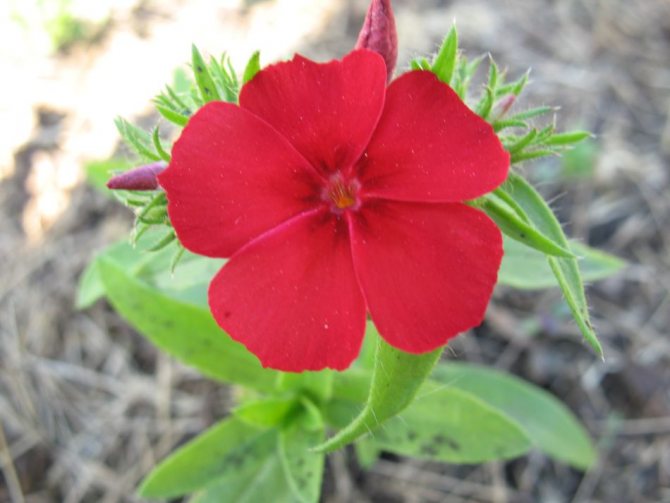

Phlox Drummond Pretty Woman in Raspberry
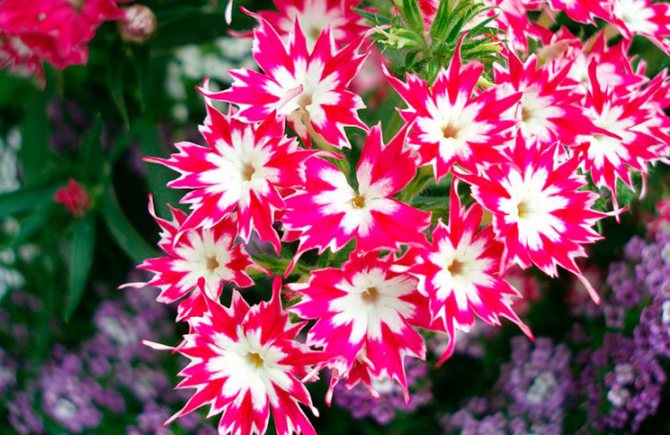

Phlox Drummond Leucantenum
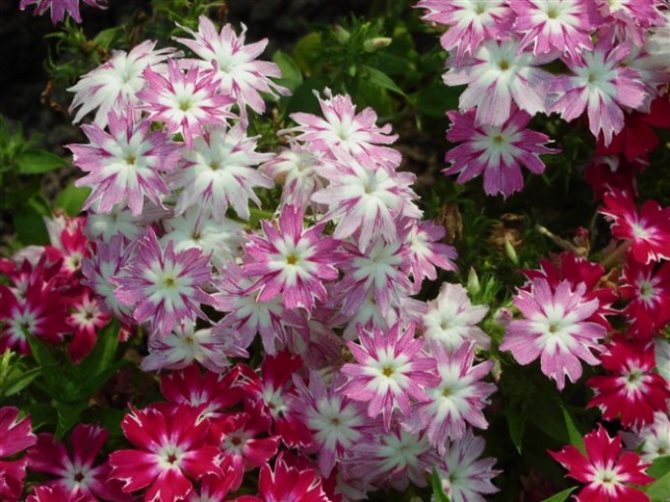

Phlox Drummond Alluring Star
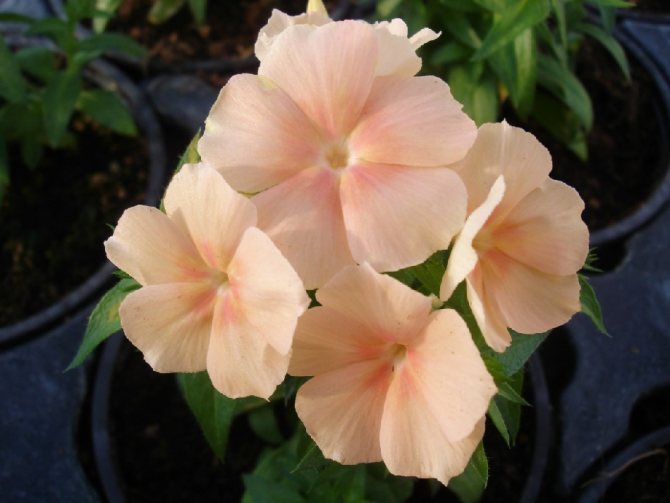

Phlox Drummond Salmon
Tall large-flowered
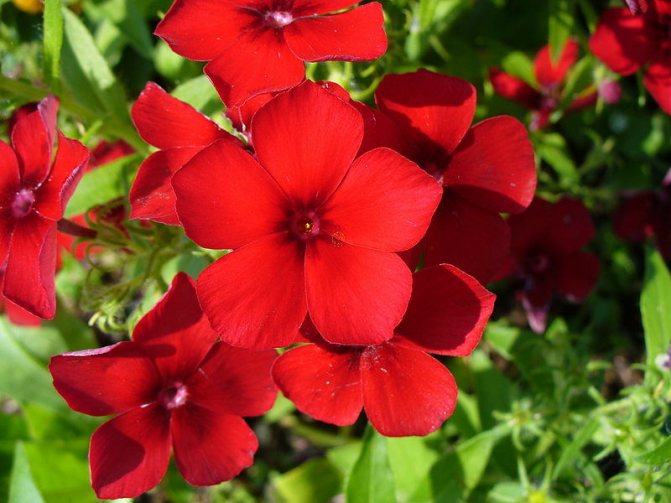

Phlox Drummond Tall bright red
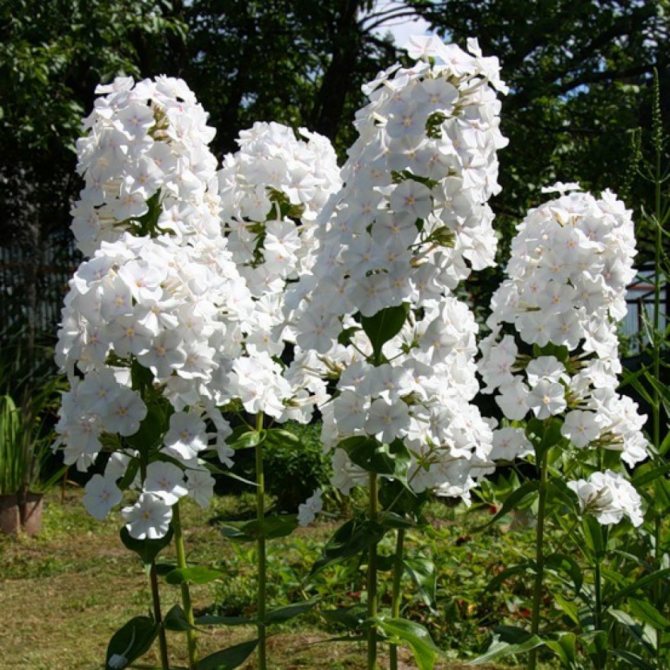

Phlox Drummond Tall White
Description of varieties
Since the bushes can be of different heights, Drummond annual phloxes of all kinds and colors are combined with each other and complement other decorative flowers in the flower beds. For example, Phlox Leukanteum and Drummond perfectly complement each other, astropod-like chamomile and phlox are combined.
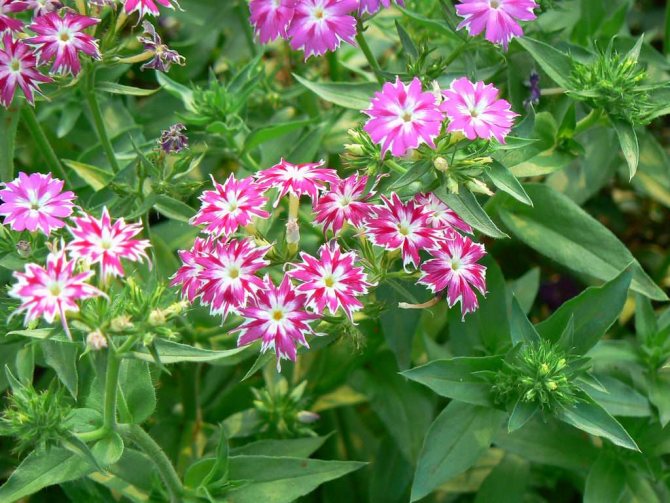

Phlox Drummond refers to low-growing bushes, growing up to 30 cm or half a meter. The plant can bloom during the summer, up to autumn frosts up to 5-7 ° C. Large flowers, 2-3 cm in diameter, are collected in umbrellas and shields, therefore they look like large hats. They can withstand the scorching sun and not lose their decorative effect throughout the season.
Important! When planting phlox in a flower bed, you need to place bushes of tall varieties in the center, then medium, low and ground cover plants.
Drummond's annual phlox from seeds comes in different garden forms: dwarf, stellate, and tetraploid. Stems in all species are highly branched and have persistent stickiness. Among the shades of Drummond phlox are purple, lilac, fiery red, pink, snow-white. On the petals, you can see specks, streaks, rings or strokes. The flowers themselves come in a variety of shapes: round or wheel-like, similar to stars or roses.
Let's take a closer look at what Drummond annual phloxes are:
Drummond Promis
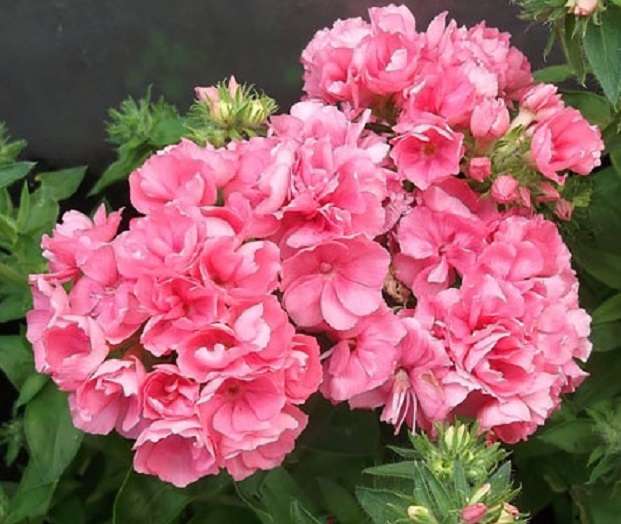

The short and compact Drummond Promis is distinguished by originality and attractiveness both in single flowering and in combination with other phlox. It can be seen by its double and semi-double flowers, which form large corymbose inflorescences. It amazes with the variety of colors and the duration of flowering from June to October, therefore it becomes an adornment of rocky decorative hills, flower beds, borders, rabatok.
Drummond Beauty


The new species is distinguished by large crimson flowers 3-4 cm in diameter, collected in umbellate inflorescences. The bushes are compact, up to 25-30 cm tall, look great on rocky hills, curbs, rabatki and flower beds. Phlox withstands the first frosts well.
Drummond from Texas
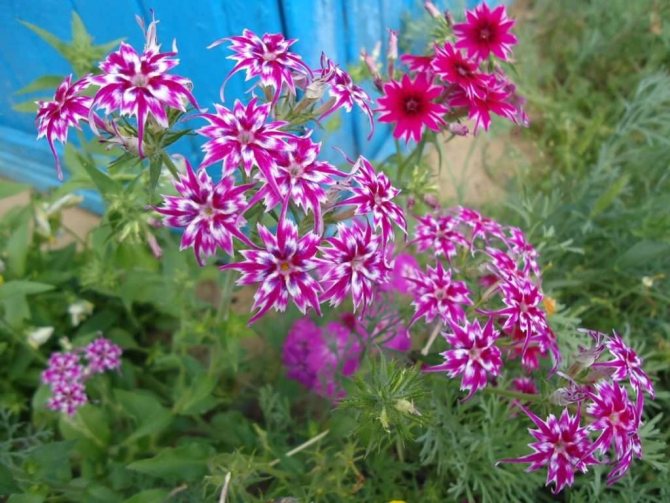

The plant has a height of 12-30 cm, branched stems, oval-lanceolate opposite leaves. The flowers give off a subtle aroma and come in salmon, yellow, white, purple and dark red colors.
Promise Pink
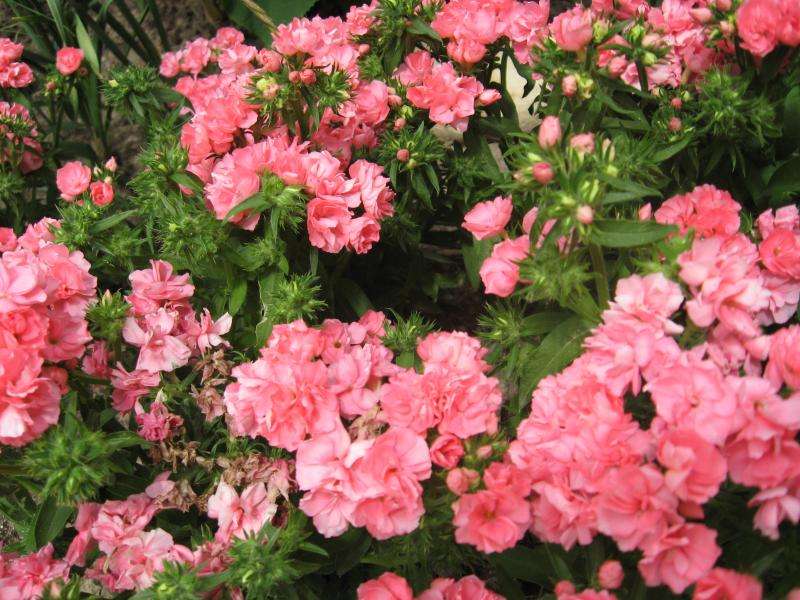

The popular annual phlox reaches 20 cm in height, pink flowers are decorated with terry. It is used for design compositions, combining with other, taller plants on alpine slides and flower beds.
Constellation


Florists often create bouquets of these phloxes (from large flowers up to 3 cm in diameter). On branched bushes, up to 20 cm high, there are always many inflorescences of scarlet red and white flowers, emitting an unusual smell. The leaves have a characteristic edge. Flower lovers often decorate balconies and loggias with them.
Terry
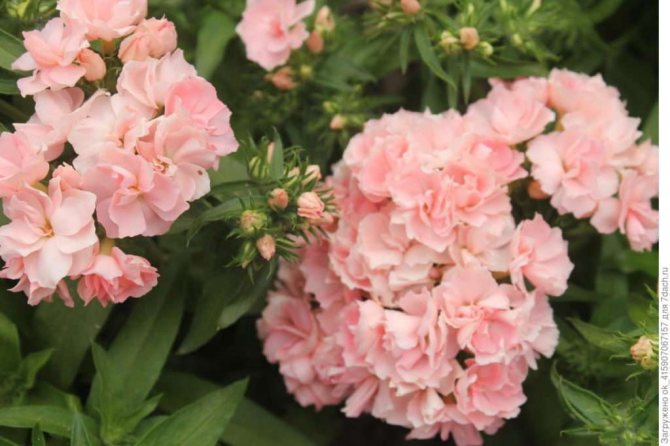

With a bush height of up to 30 cm and a tight fit of the inflorescences to each other, phlox can be mistaken for a large plant. Thanks to the cream, pink and scarlet shades of terry flowers, the plant is grown on verandas, balconies, in hanging containers in cafes.
Twinkling star
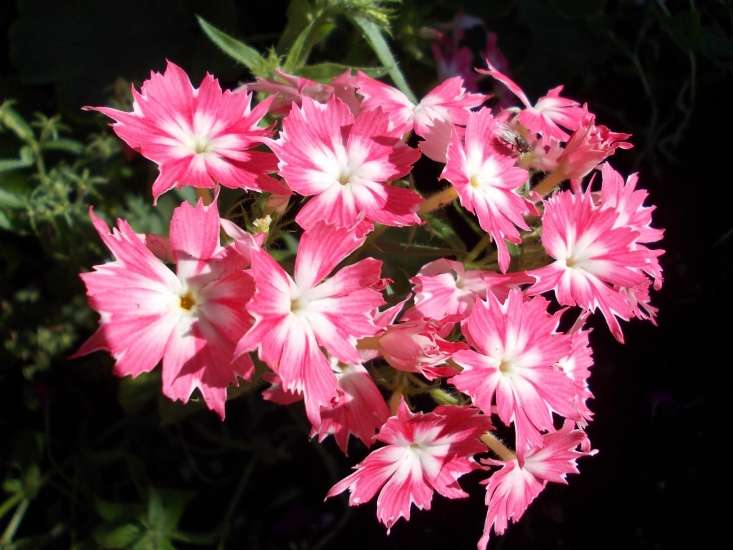

On miniature bushes, reaching a height of 25 cm, flower petals have a pointed star shape. Can be planted outdoors and in pots. Phlox flowers bloom and delight the eyes from June to September.
star Rain
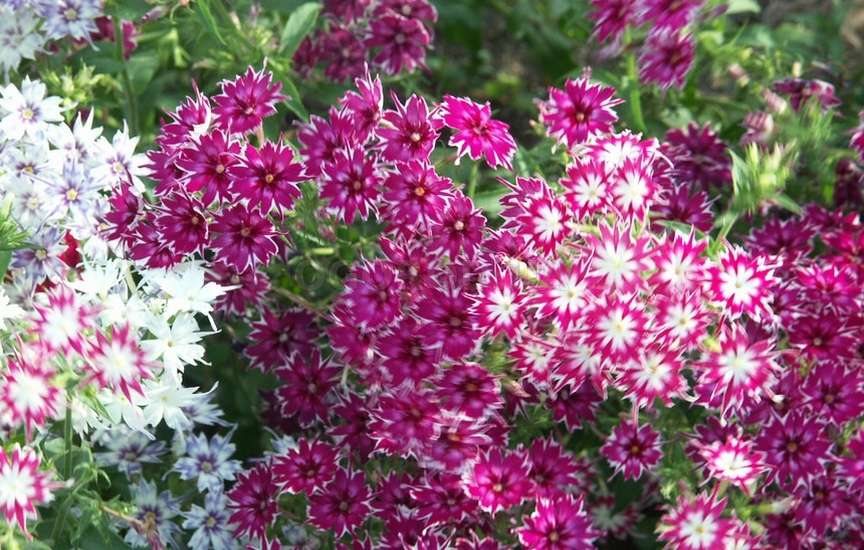

Reaches a height of 50 cm and has straight and lateral stems. Withstands drought, shade and first frosts well. Differs in long flowering in lighted places and a pleasant aroma, but rarely blooms in the shade. The variety goes well with short, compact bushes.
Batons
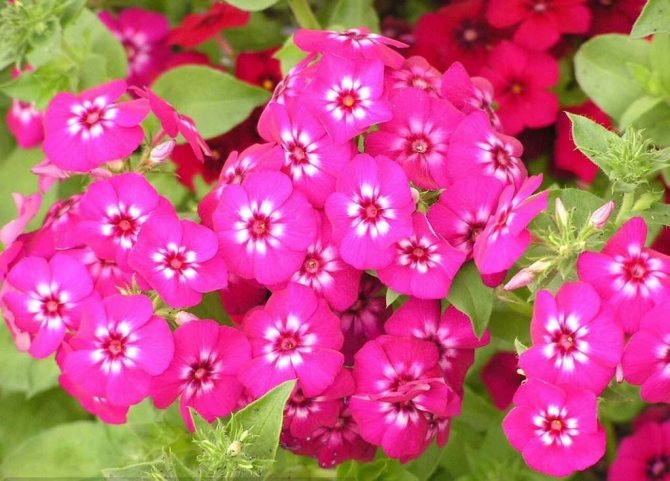

On low-growing tender bushes, up to 20 cm high, bicolor inflorescences stand out, in the center of which a circle is different. It can withstand relative drought and lack of fertilization, but will bloom profusely only in illuminated places.
Strawberry with cream and Chanel
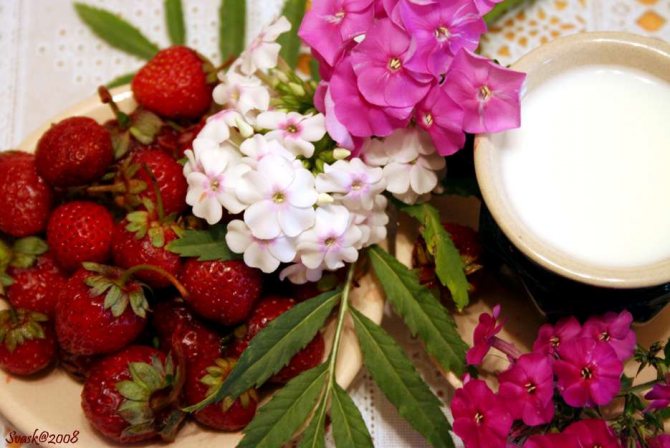

Phlox of these varieties delight with bright double and very lush buds of flowers of various shades. They look very solemn, they are easy to grow, which is why they are very popular with florists and flower gardens.
Phlox Drummond annual - growing from seed
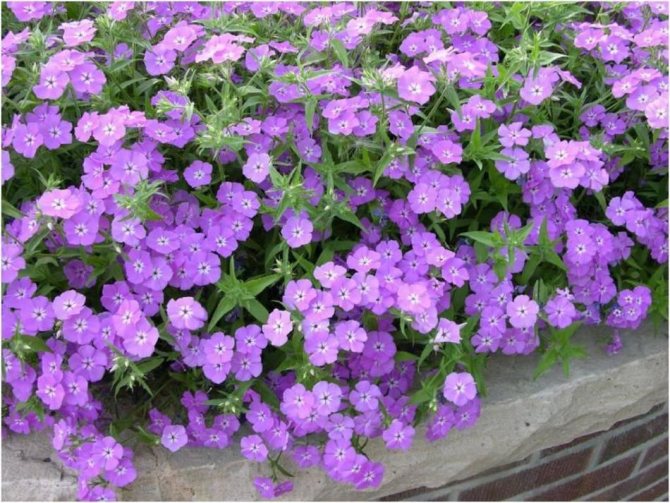

Phlox Drummond - growing from seed
- Drummond phlox seeds can be planted both in the spring and in late autumn or early winter. The fact is that this plant is quite winter-hardy, therefore it will not die in severe frosts and snowfalls.
- If you nevertheless ventured into winter planting, and your latitudes are characterized by a rather warm winter, then planting phlox seeds is best in late December or early January (as the popular saying goes: “When the last leaf falls from a cherry”).
- If an unplanned thaw begins after planting, the planting site should be covered with a non-woven cloth to protect the plant from sudden growth under the influence of sunlight. When the thaw has passed, the canvas will need to be removed.
- If the planting of Drummond phlox is planned for the spring, then it is best to do it in late April - early May.To do this, in the designated area, it is necessary to make small holes at a distance of 15 to 25 cm from each other (depending on the height and width of the shrub) and fill them with water. When the water in the pits is absorbed, you need to put a couple of seeds in them and cover them with earth. Planted seeds are best covered with spunbond or lutrasil. When the first shoots appear, the shelter can be removed.
- After the germination of the sprouts, the soil around them must be loosened, they themselves should be thinned out (if there are more than three sprouts) and fed with liquid nitrogen fertilizer.
- A week later, nitrogen fertilizers will need to be applied again.
- When the first flower ovaries appear, it is advisable to feed Drummond phloxes with complex fertilizers.
How do I get my own seeds?
If you have mastered the rules of planting and caring for plants bought in stores, you can stock up on your own seeds in the fall.
What plants are suitable for reproduction?
The first step is to notice in some way during flowering each variety. You can stick self-adhesive price tags on the stem, which are sold in rollers, by writing on each variety number (and indicating in a separate notebook which variety goes under which number). Some gardeners knit ribbons or threads of different colors on the stems.
It's good if at the time of planting store seeds you pay attention to the packaging information. Plants marked F1 are not suitable for future seed collection, as they are hybrids. They will never grow flowers similar to the variety from which you collected them. But as an experiment, you can plant the seeds collected from the hybrids somewhere in an inconspicuous place on the site. It happens that flowers grow with an extraordinary color or shape of petals that do not retain the characteristics of the variety, but are quite spectacular in themselves.
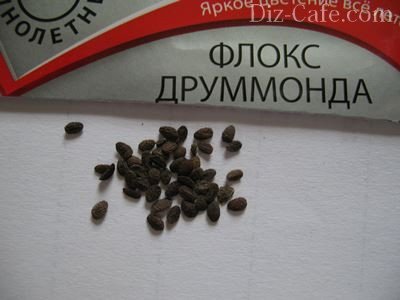

It is almost impossible to obtain high-quality seed material at home from F1 hybrids or tetraploid varieties, since the seeds do not retain the characteristics of a “parent”
Plant the bags without F1 marking separately so that you can collect seeds from these plants later. When blooming, sweep the most lush and well-blooming phlox. They will make good seed material.
Seed Drying Rules
The seeds of the plant ripen almost all at the same time, therefore, after shedding the petals, you can cut the plant at the root and lay it for ripening in a warm room (23-25 degrees) without direct sunlight.
It is better to choose a dry sunny day for collecting seeds. Cutting is done in the afternoon, so that the morning dew is completely dry on the petals.
Prepared flowers are laid out on sheets of newspaper, each variety separately, and left to dry. As a rule, the green mass dries completely in 3 weeks. To dry evenly, you need to mix the flowers periodically. The signal that the phlox is completely dry is a dry stem, which easily breaks in the hands.
Then proceed as follows:
- Dried inflorescences are carefully rubbed in their hands over a clean newspaper so that the seed pods fall out. In an annual, the seeds are noticeable, so you will see if they all fell out or not. You can immerse the plants in a linen bag and trample your feet.
- All large debris is removed by hand. A dry mass of leaves, seeds and dust mixed in should remain on the newspaper.
- To separate the seeds from this mass, sieves with cells of different fractions are used. First - with large ones to weed out large debris, and then - with small ones to remove dust. As a result, there will be seed on the table, mixed with garbage of the same fraction.
- You can remove the unnecessary by blowing seeds. To do this, on a windy day, spread a wide sheet on the grass and slowly pour seeds from a bowl onto it. Hold the container about one meter from the ground. The seeds fall on the sheet, and light debris will be blown away by the wind. At home, this procedure can be done using a hair dryer.
After all the above steps, the peeled seeds are scattered into paper or cloth bags, signing where which variety is, and hidden in a dry, dark place for storage.
How to feed phloxes for abundant flowering?
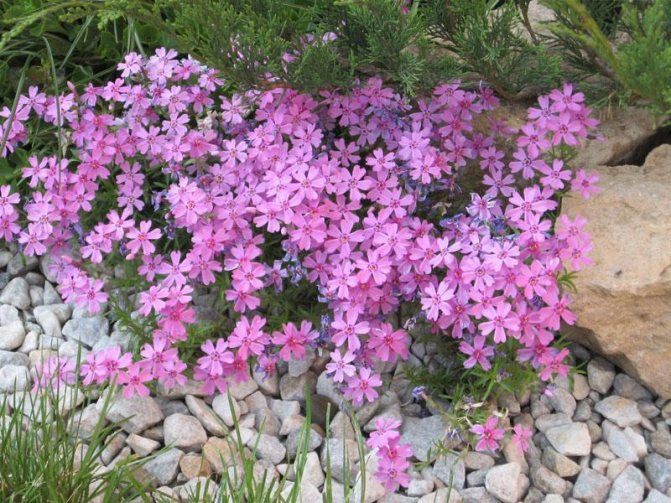

What fertilizer will help improve the flowering of phlox?
Phlox can be fed with organic and mineral fertilizers. For each stage of plant development, it is best to use a top dressing that is suitable for this particular stage:
- Even before the snow melts, you can fertilize the soil with organo-mineral dressings: 20 g of ammonium nitrate, 150 g of wood ash and 60 g of superphosphates
- During the budding period, phloxes can be fertilized with a solution of manure or droppings (the ratio of manure to water is 1 to 25), as well as ammonium nitrate (30g per bucket of water)
- During the flowering period, it is advisable to feed phlox with nitrogen-potassium fertilizers: for a solution of droppings, 20 g of potassium sulfate and superphosphate, ready-made fertilizer Flower or Agricola for flowering plants
Tips and tricks from experienced summer residents
Experienced gardeners know that flowering can be extended by up to a month with the following tricks:
- At the onset of heat, mulch the flower bed with sawdust or bark to reduce the temperature in the soil.
- It is necessary to loosen the soil carefully and without deepening, since the phlox root system is superficial and easily damaged.
- These plants do not like drafts, therefore, on the north side, the flower bed should be protected by conifers or tall perennials.
- Flowers respond well to yeast feeding. If bread is moldy in the house, soak it in water (a loaf per bucket, 100 grams per liter) and let it stand for a day. Feed the plants with the prepared solution. Dig the remains of the bread into the ground.
In terms of the brightness of the color and the original shape of the flowers, Drummond's phlox is not inferior to such recognized annual beauties as petunias, salvias, asters. Just one packet of seeds will transform the flower bed beyond recognition!
What to plant next to phlox?


What to plant next to phlox?
In order for a flowerbed with phlox planted on it to look more beautiful, you need to know what plants can and should be planted next to these bright beauties. Here are some examples of those flowers and plants that will look harmonious next to phlox:
In summer time
- alpine aster
- undersized bell
- small petals
- geranium
- herbal clove
- veronica
- Highlander
In the summer-autumn period
- astilbe
- host
- lungwort
- basilis
- Siberian iris
In the spring
- dwarf iris
- primroses
- saxifrage
In the autumn
- snowdrops
- crocuses
- scaffolds
- dwarf barberry Tunberka
- spireas
Regardless of what time phlox bloom occurs, the following plants will look good with them:
- dwarf wormwood
- cleanser
- splinter
- edelweiss
- rejuvenated
- pion
- lily
- pyrethrum
- somedago
- campanula
- lupins
- heleniums
- delphiniums
- oriental poppy


